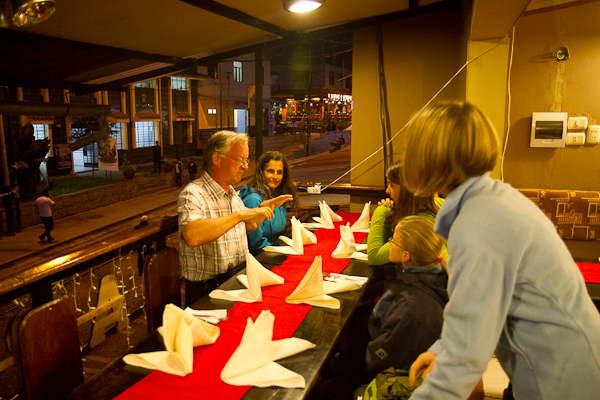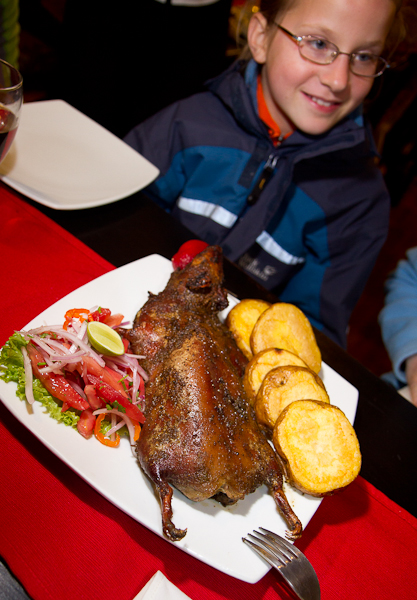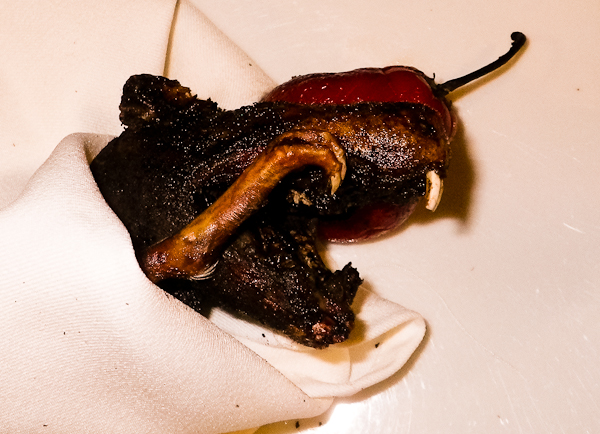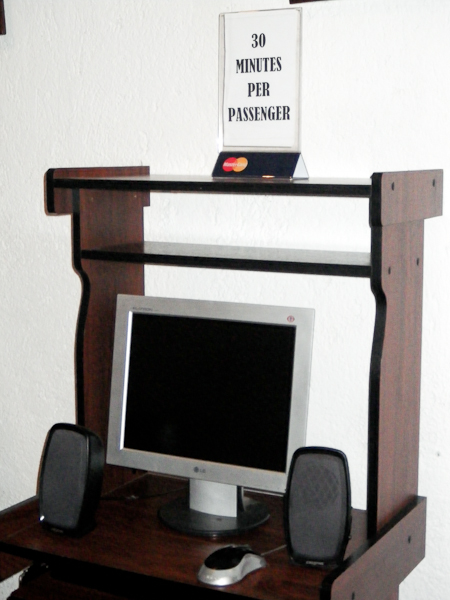Peru Adventures
Exploring Machu Picchu
Friday, December 23, 2011
After a very early breakfast, we rushed to catch the 6 am train to the ancient city of Machu Picchu. However, getting to the train station was an adventure, as we had no planned transportation. Thankfully, Carlos could stop two cabs that were three-wheeled vehicles that actually fit six people and luggage. We made it in time to the train station from where our scenic train journey should start.
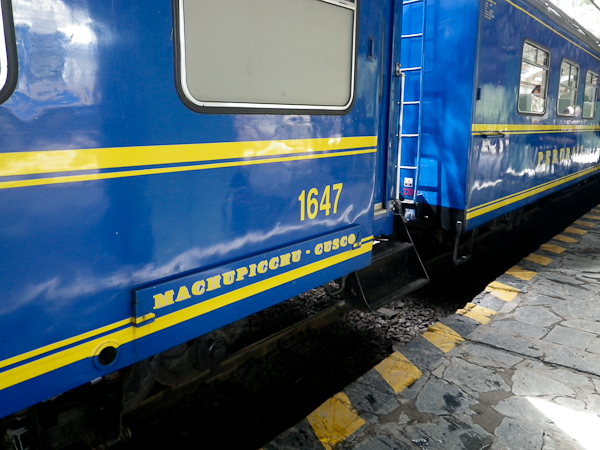
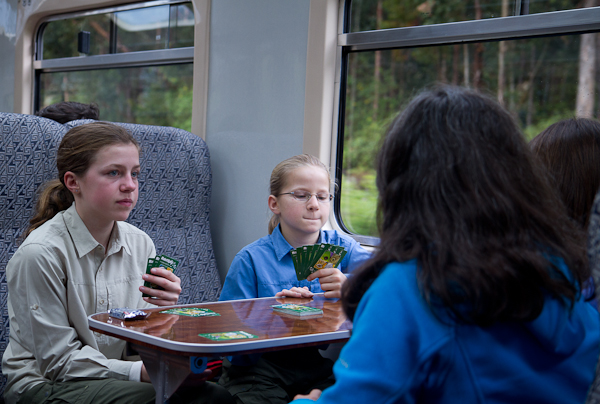
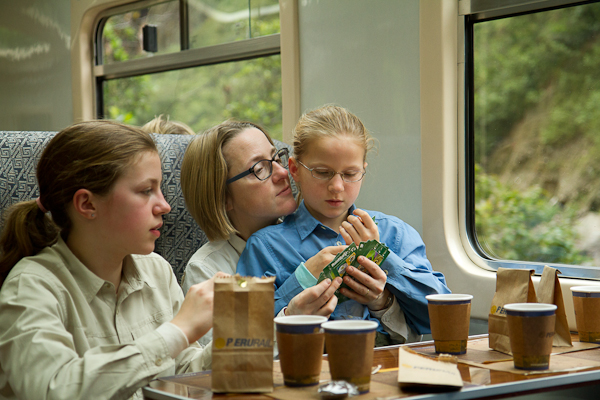
Large windows in the ceiling allowed a great view.
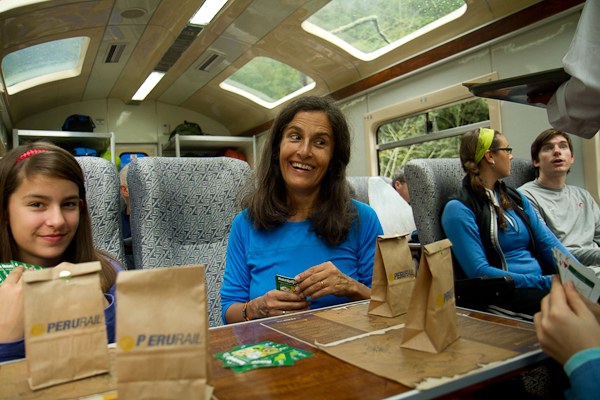
During the train ride next to the Urubamba river, Carlos explained the Inca history related to the region.
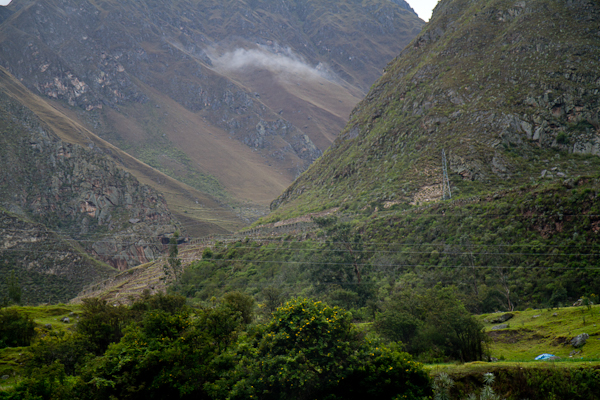
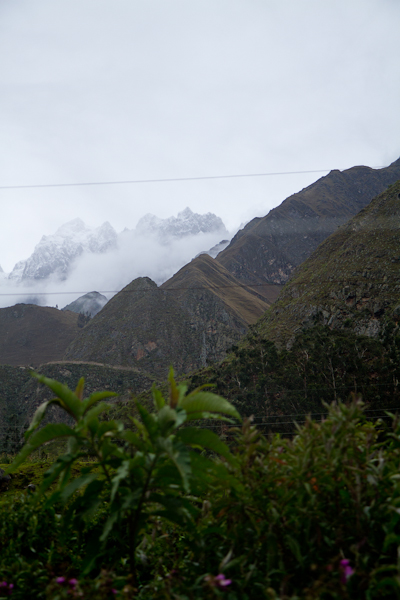
He pointed out visible parts of the Inca Trail (see zig-zag line below) which runs from Cusco to Machu Picchu.
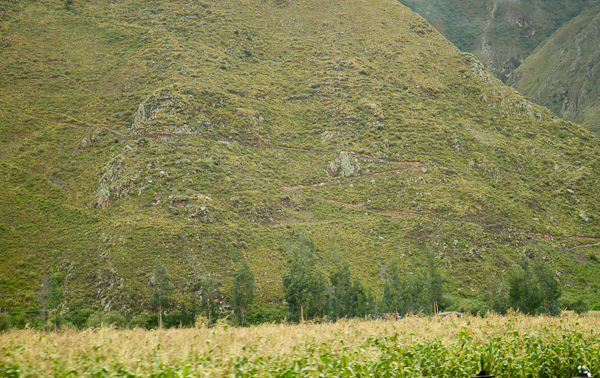
During one of the uprisings, the Inca had destroyed parts of the trails to hinder the Spanish to follow them. Interestingly, the Spanish first tried to traverse the bottom of the valley not realizing that the Incas had a hidden trail high in the mountains.
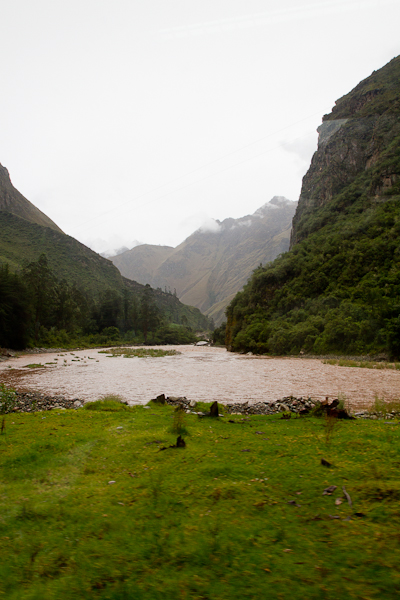
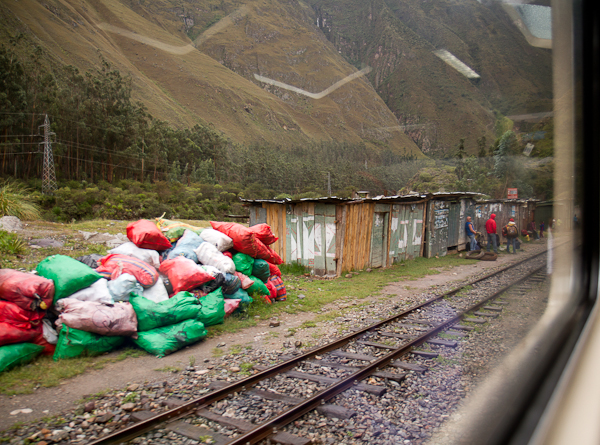
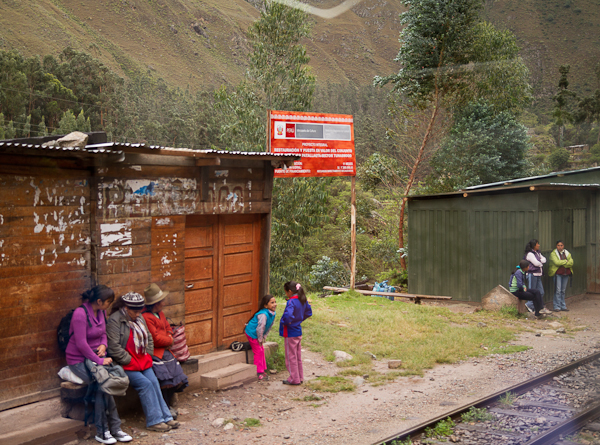
Our train ride was stopped for 40 minutes as a big rock fell onto the rails which first had to be removed by a working crew. During the train ride, we saw many rivers coming down the steep mountains, all collected in the boiling Urubamba river next to the railroad. The river is full of big boulders creating huge areas of brownish “white” water rapids.
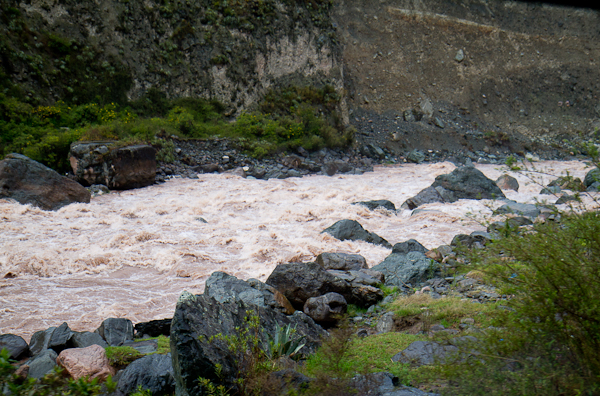
The mountains were ghostlike, covered in clouds hiding them from plain view most of the time.
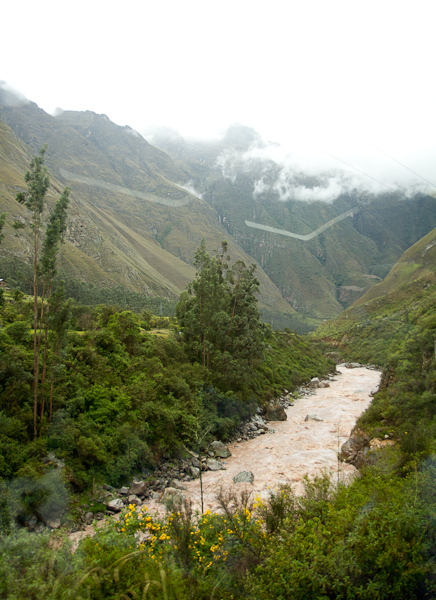
Our train started in the mountains and slowly entered the jungle in lower elevations—still 9,000 feet high. But, we could observe a change in the flora with an increasing number of epiphytes, orchids and big-leafed plants.
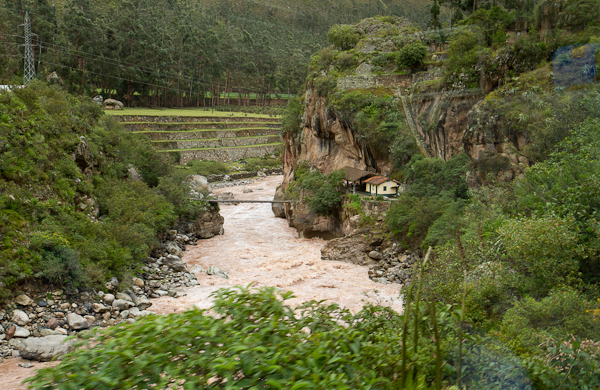
Along the way we saw several Inca terraces with attached villages.
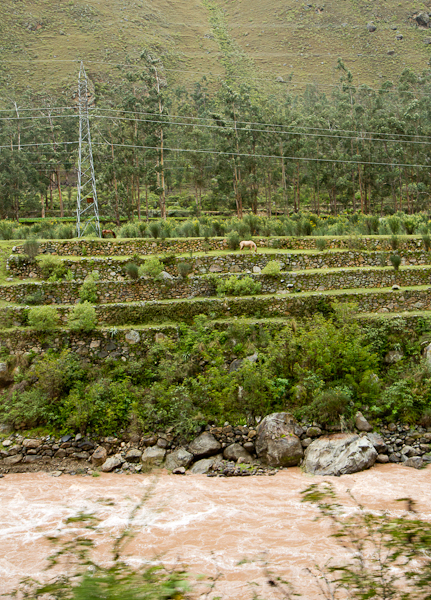
Upon arriving in Aguas Calienties, we disembarked the train and changed to a bus.


The ride to Machu Picchu up steep serpentines took about 30 minutes.
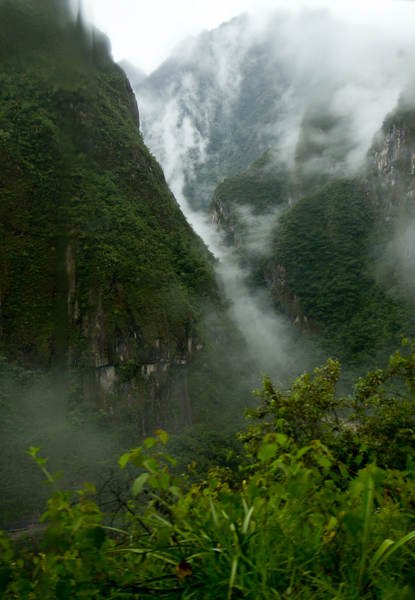
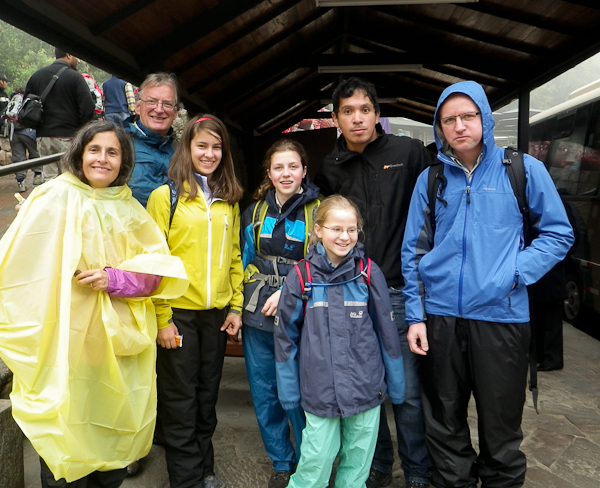
At last, we (along with a large group of locals and many, many others) were at the entrance of Machu Picchu, the most famous ruins and one of the "Wonders of the World" (re-) discovered by Hiram Bingham in 1911.
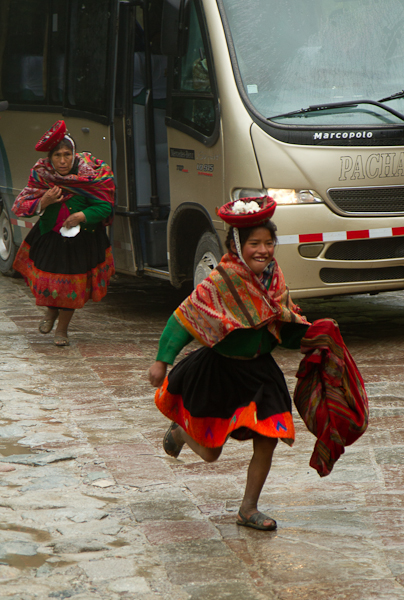
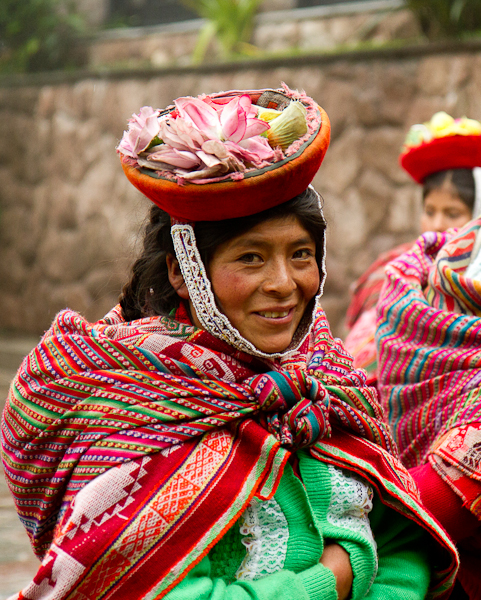
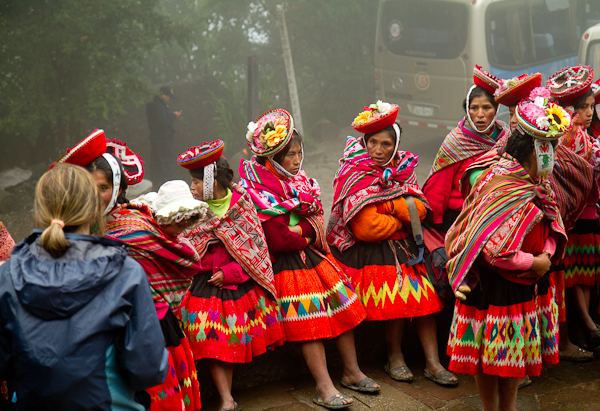
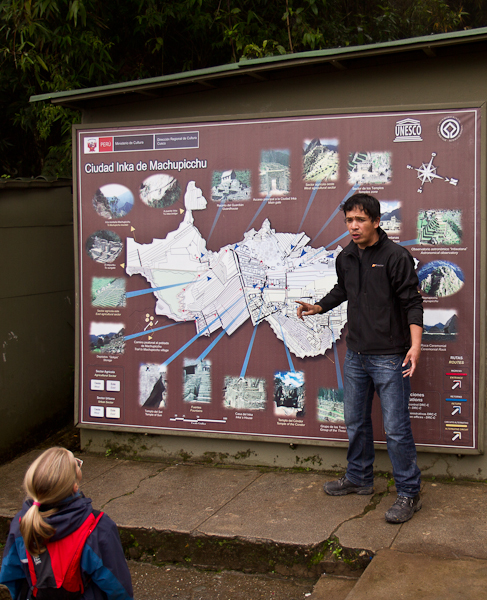
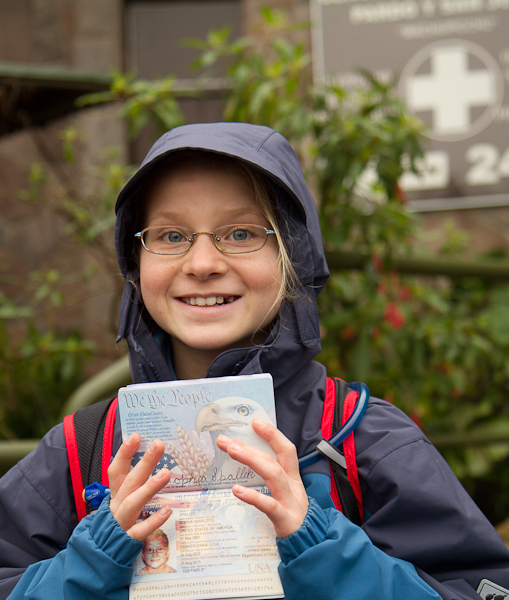
Entry requires a ticket with your name, age and gender printed on it, the ticket needs to be presented together with a valid passport when entering the park.
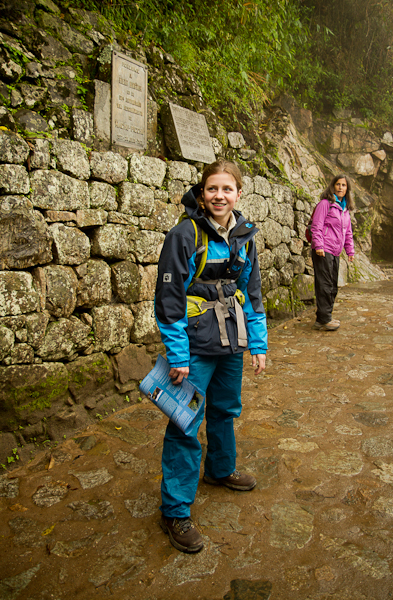
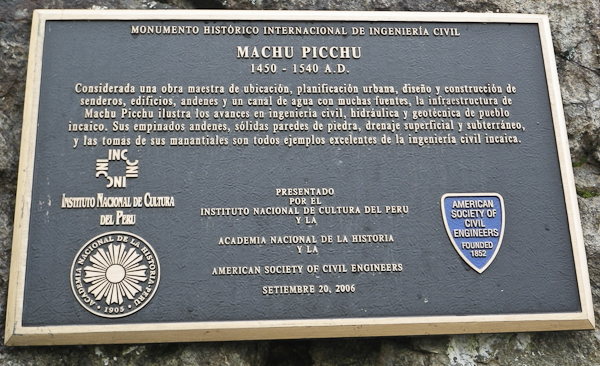
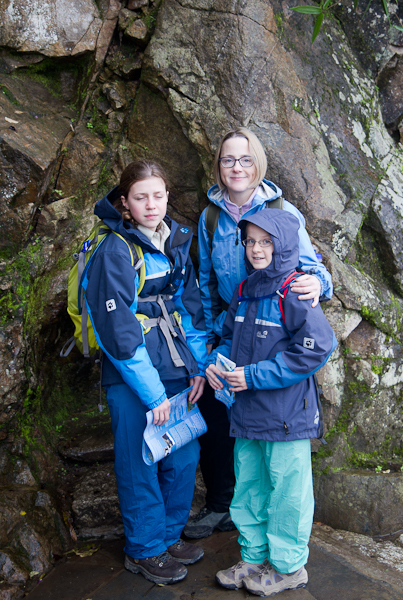
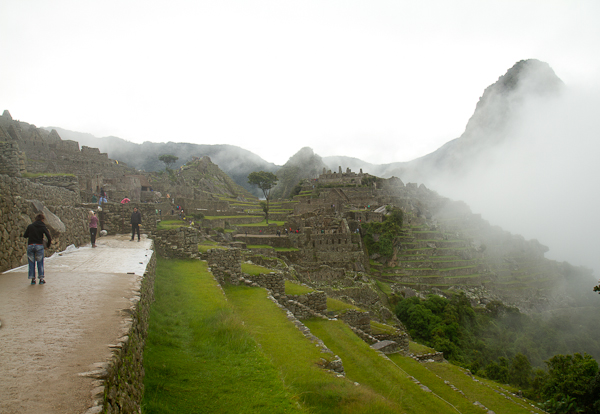
It was still early in the morning. Mountain peaks and ruins were partially covered in clouds so that initially, we could not see anything .
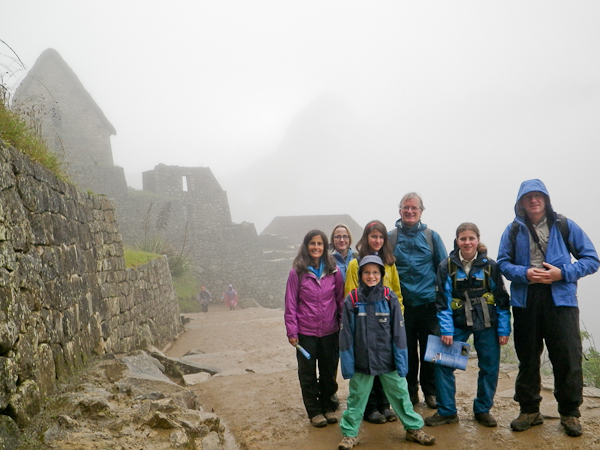
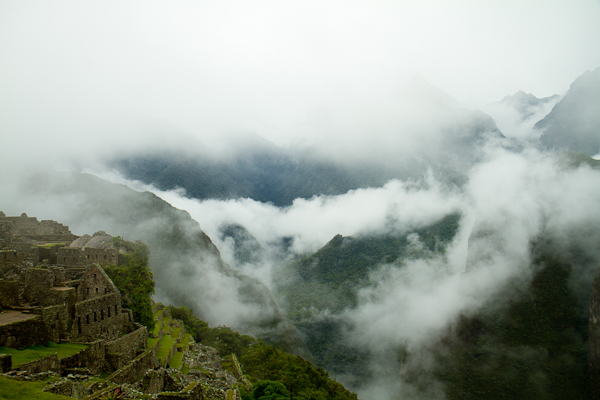
The clouds were moving fast, revealing different mountain peaks and ruins for a short time, then hiding them again, adding to the mystery of the place.
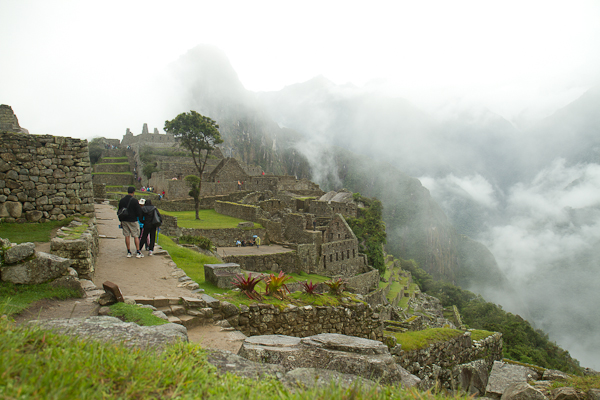
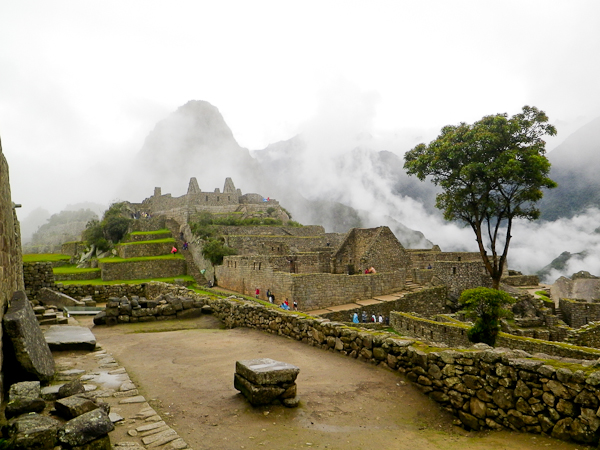
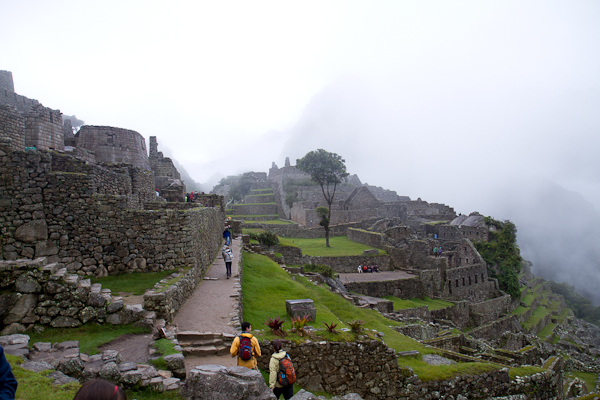
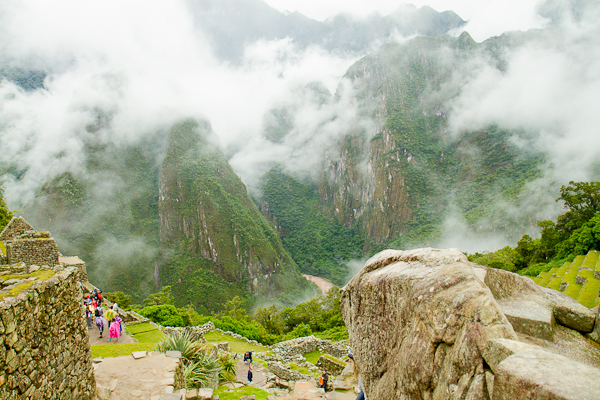
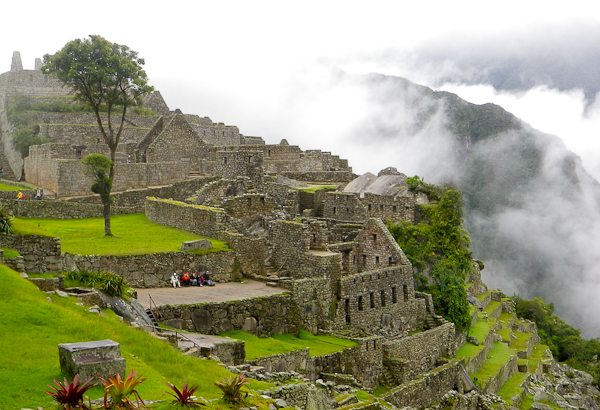
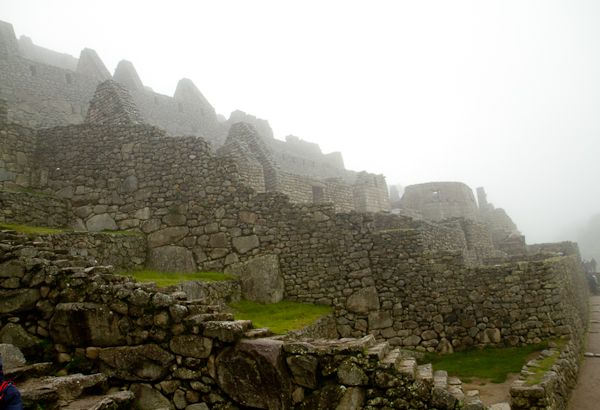
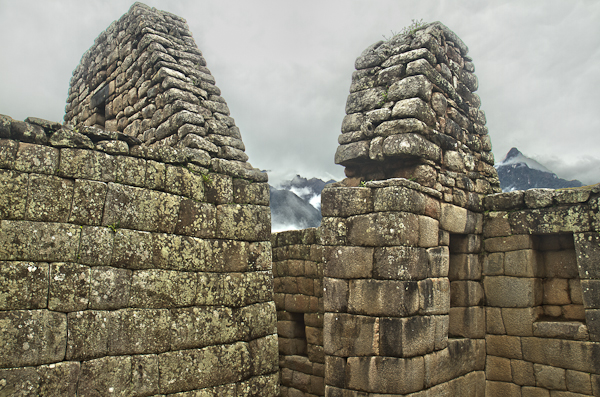
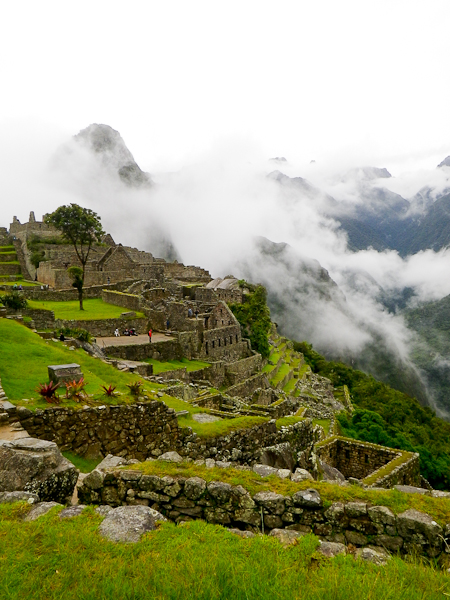
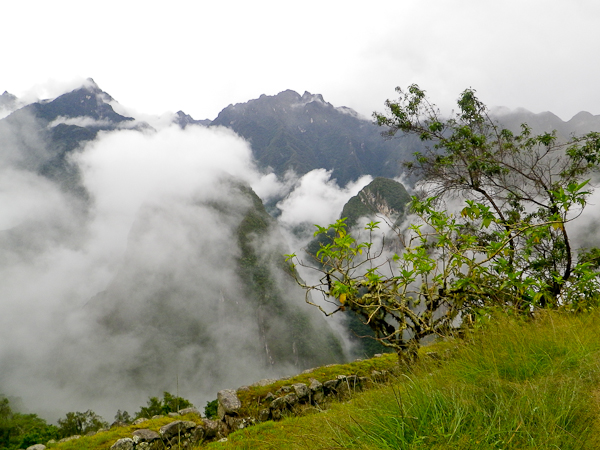
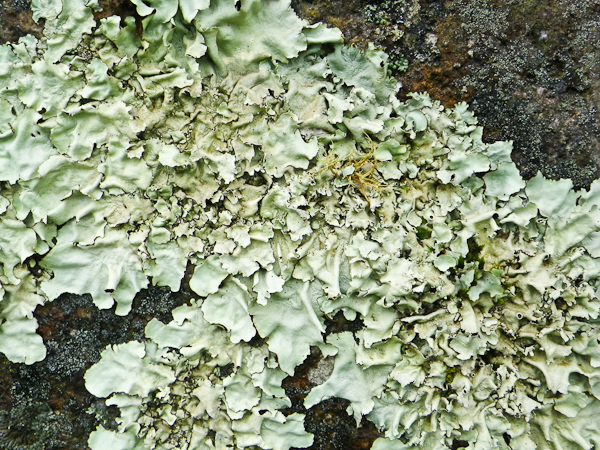
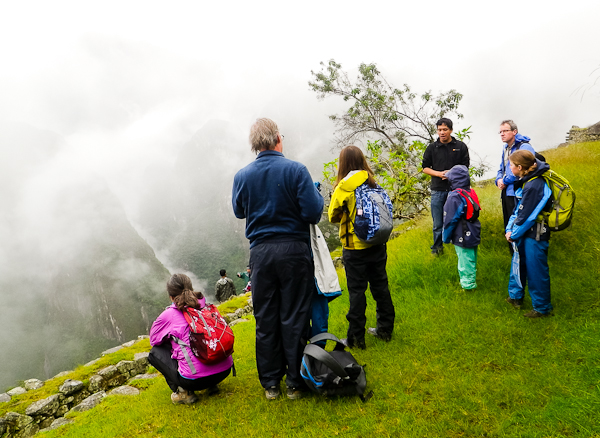
Carlos explained the history of the Incas, how they built this stone city high up on the mountain top and what has been discovered so far—60% of Machu Picchu are still covered by dirt and vegetation.
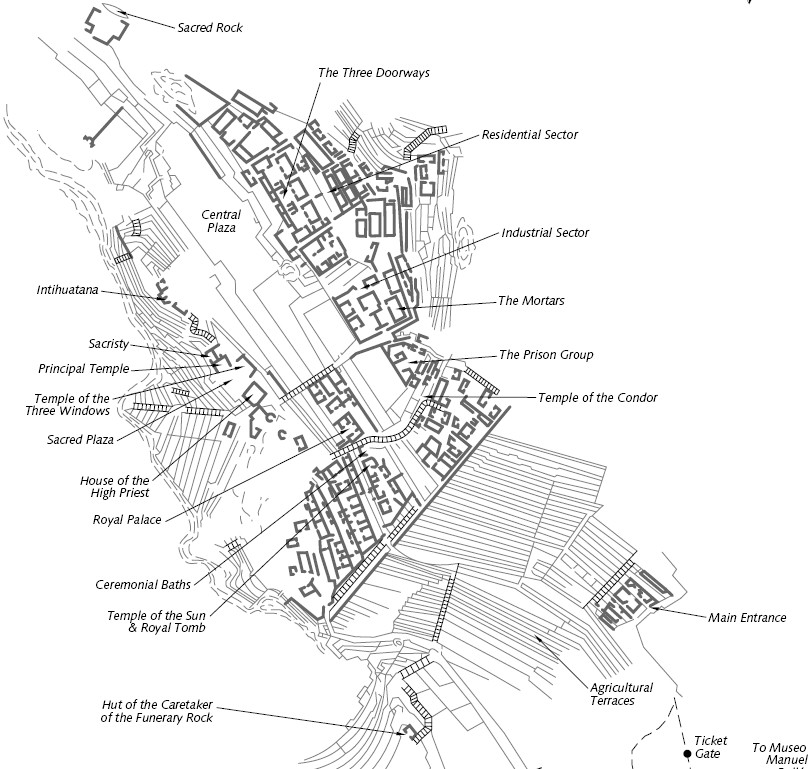
Source: http://www.leegilchrist.net/images/Peru/Machu%20Picchu/Machu%20Picchu%20map%202.jpg
We spent all day exploring the many passageways and stone structures of this mysterious place, only interrupted by a short lunch and bathroom break—there are no facilities in the area of the monuments.
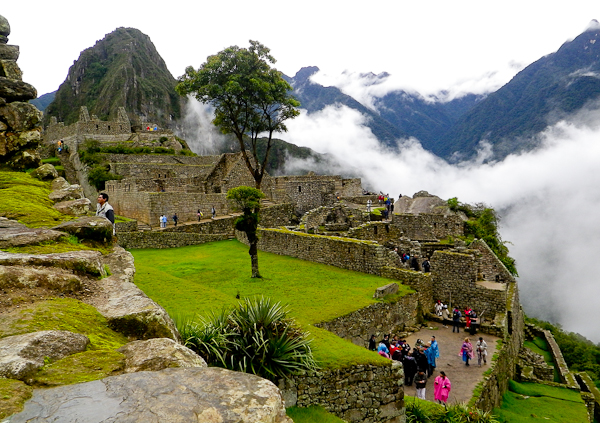
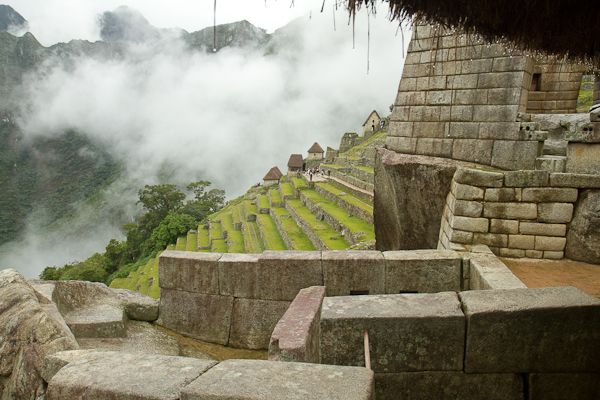
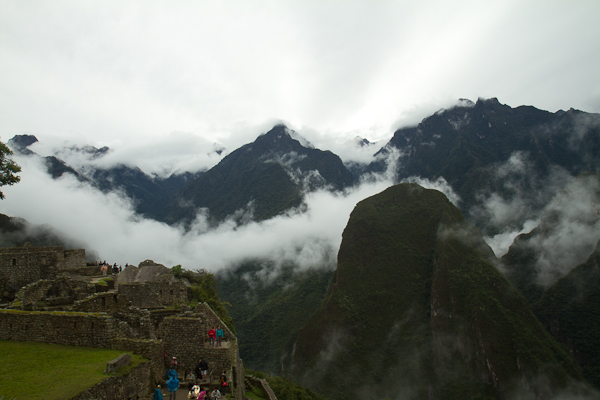
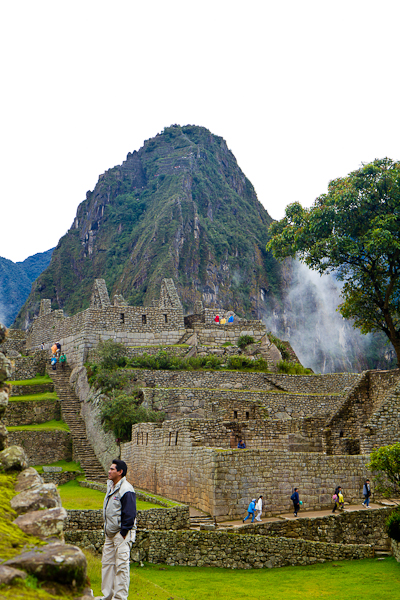
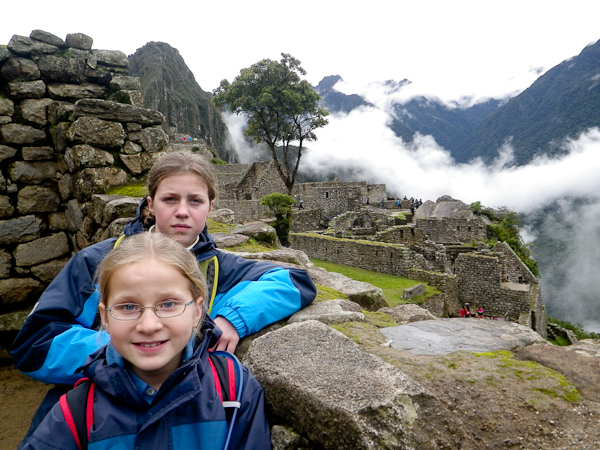
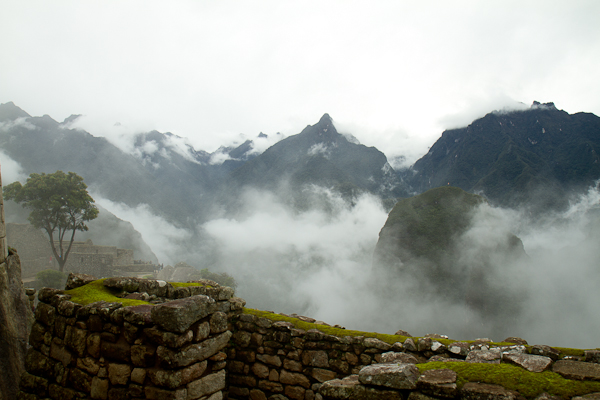
In the early afternoon the clouds disappeared and we could view all the surrounding mountains including Huayna Picchu (above), the mountain overlooking Machu Picchu.
Source (Click to enlarge): http://www.destination360.com/south-america/peru/map-of-machu-picchu
Machu Picchu can be divided into three areas, the agricultural, royal (or sacred) and secular sectors.
The agricultural area consists of teracces, as seen below.
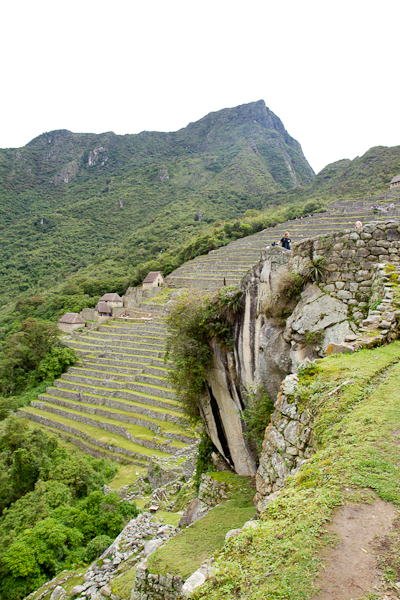
The Incas carried rocks and gravel from the river up the steep mountains in order to create layers of rock and gravel for drainage. On top of that they added fertile soil brought in from the Sacred Valley.
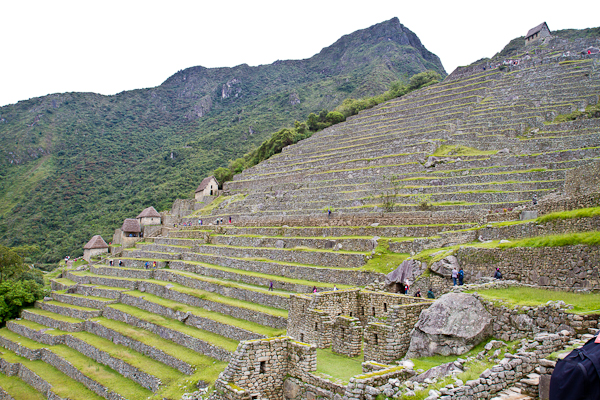
Perfect walls
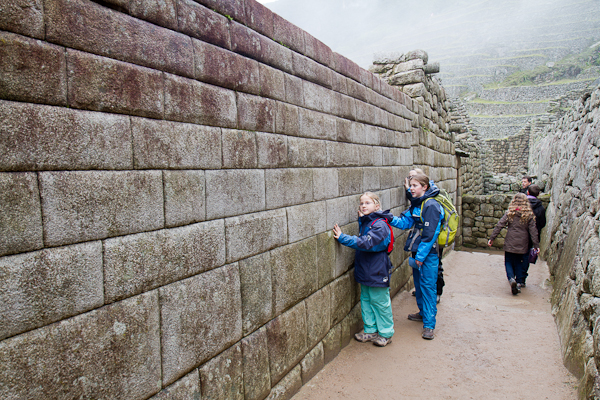
This wall holds one of the secrets of Machu Picchu: Rocks on one (front) half are polished, smooth and flat, wherease the other half appears uneven and unfinished.
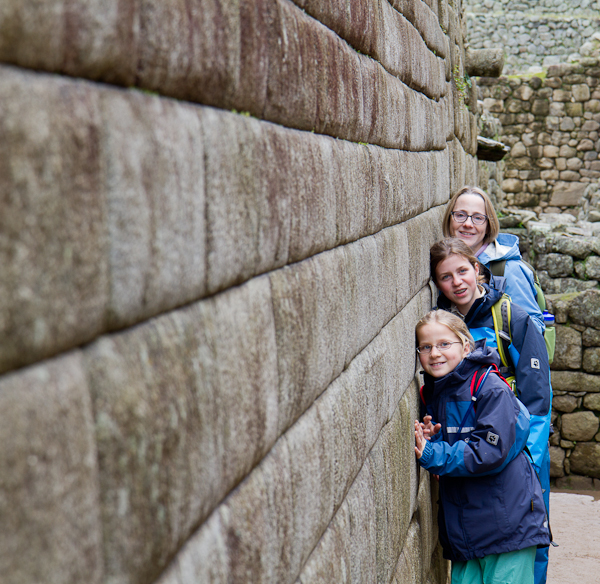
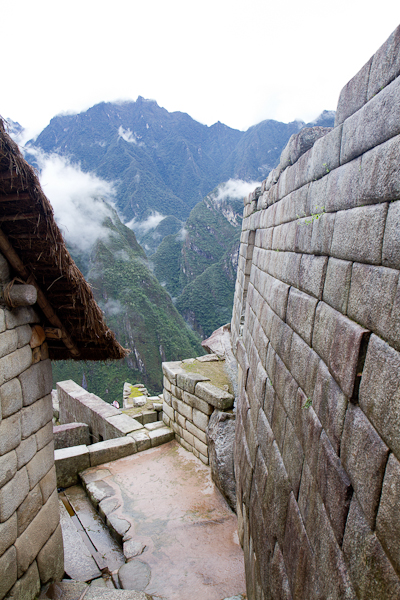
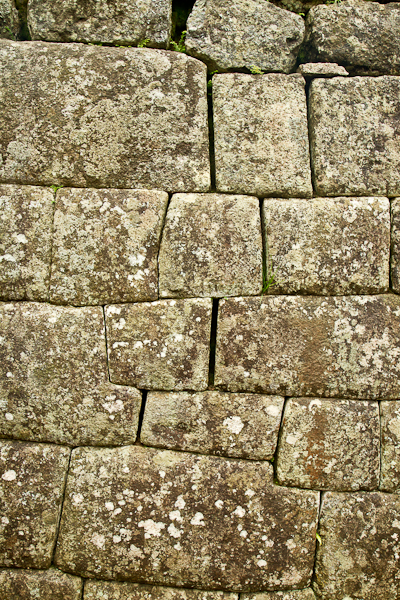
Examples for mortar-free walls. The rocks fit perfectly, almost lego-like.
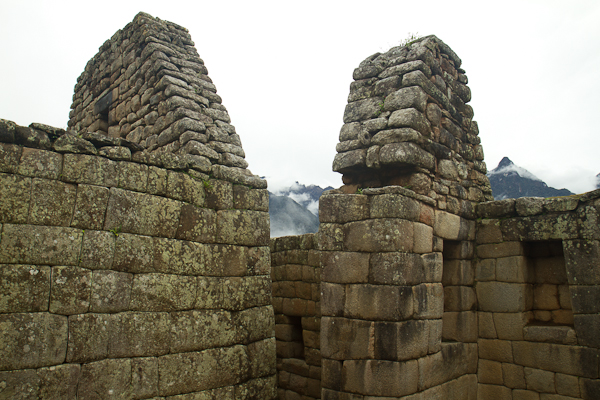
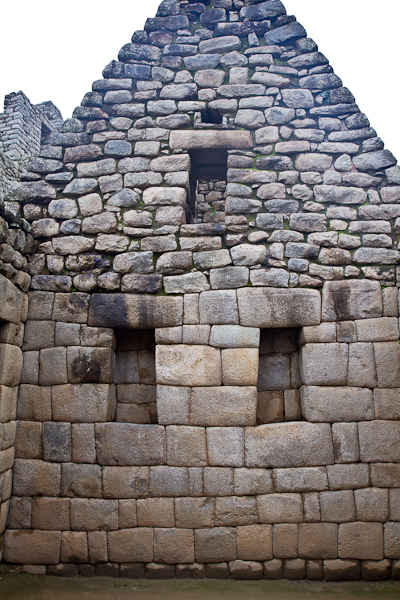
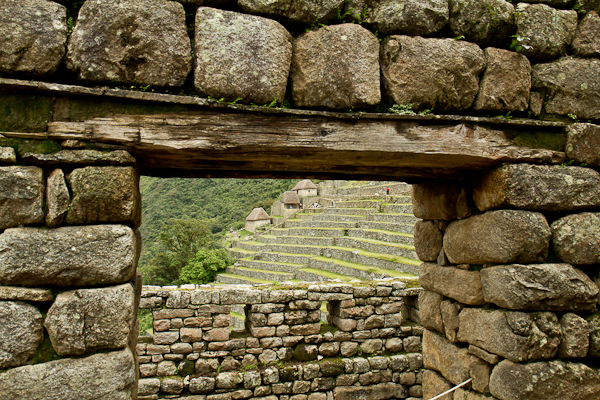
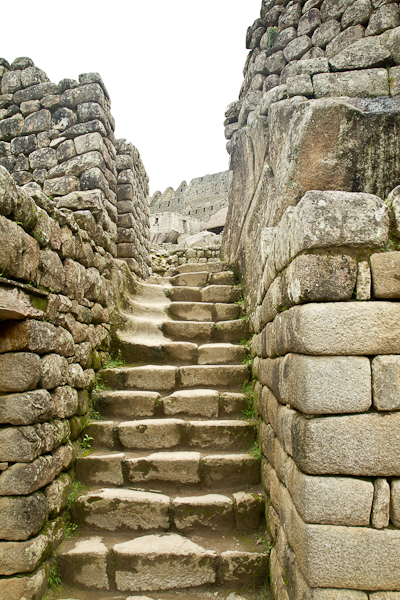
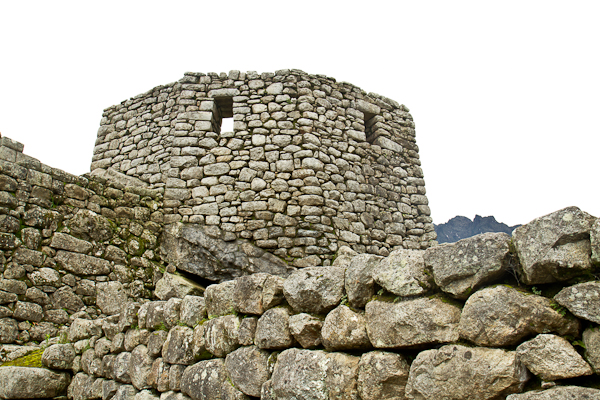
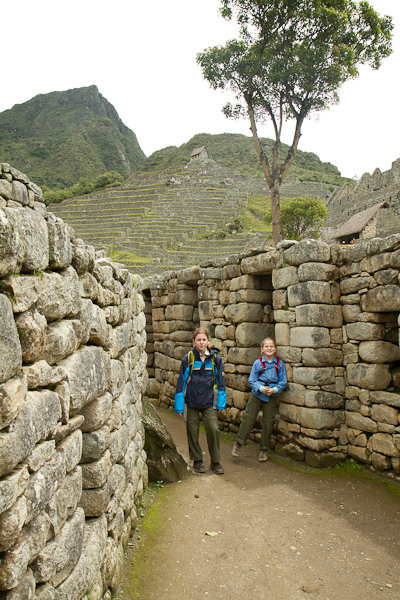
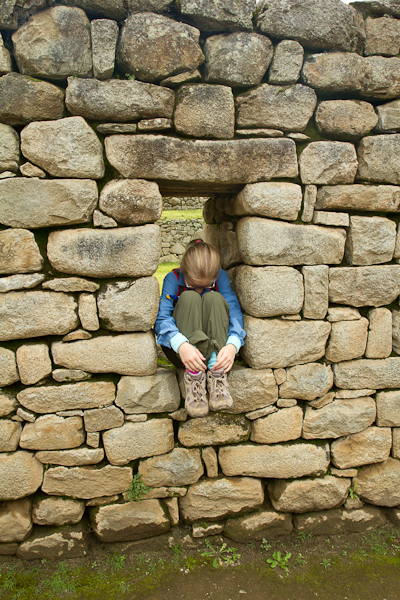
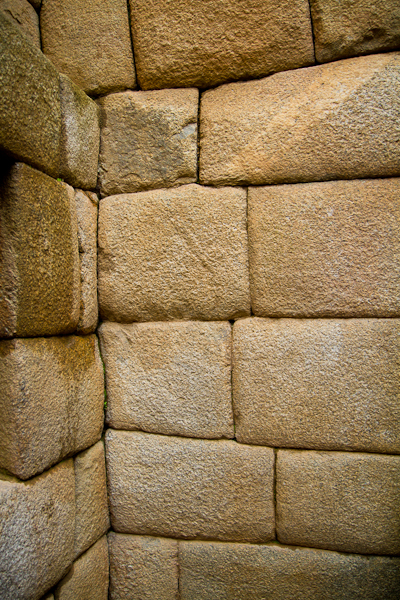
Large boulders like the ones above were used to build for the nobles whereas smaller, not as well fitting rocks rocks were used to build peasant quarters (below).
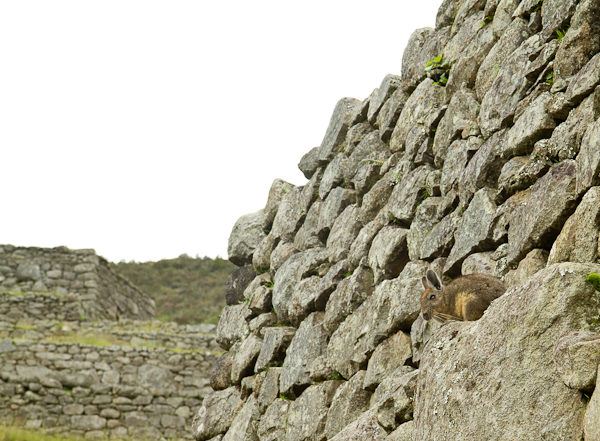
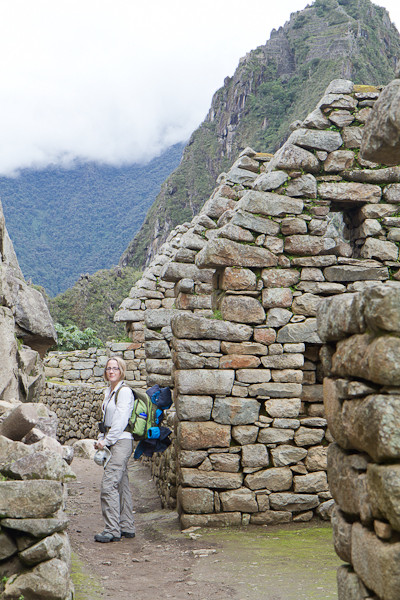
Integration of natural rocks
Large natural boulders are incorporated into the walls and buildings to increase stability and/or for visualization (See Temple of the Condor or Royal Tomb):
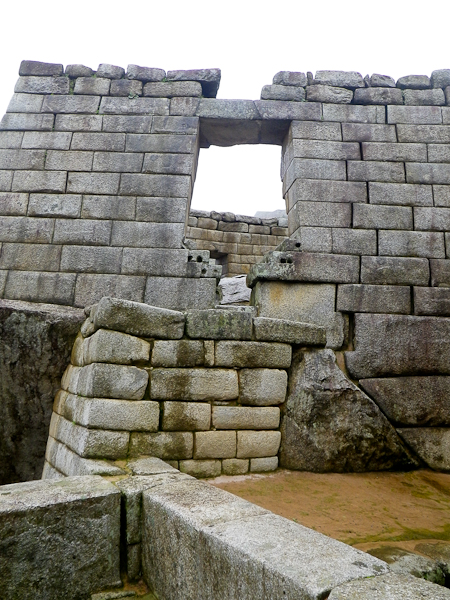
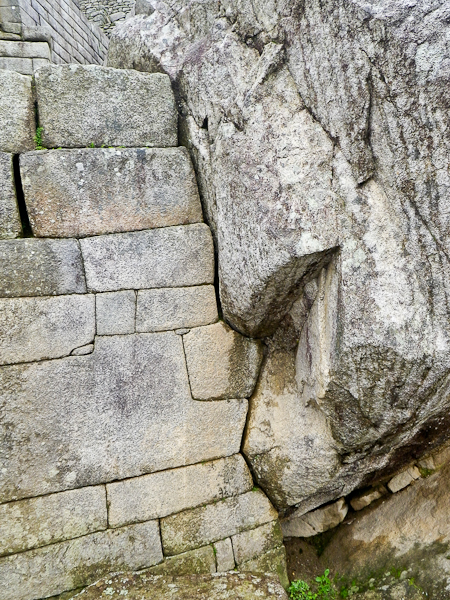
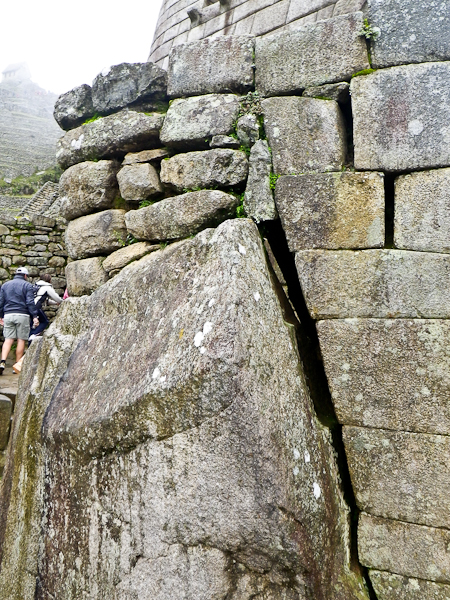
Temple of the Sun
The semicircular Temple of the Sun aligns perfectly with the movement of the sun.
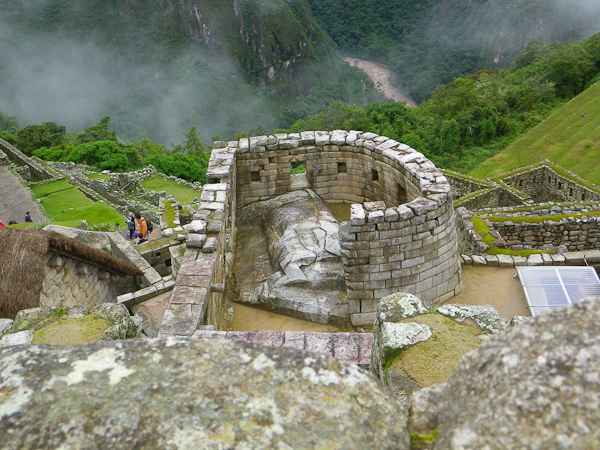
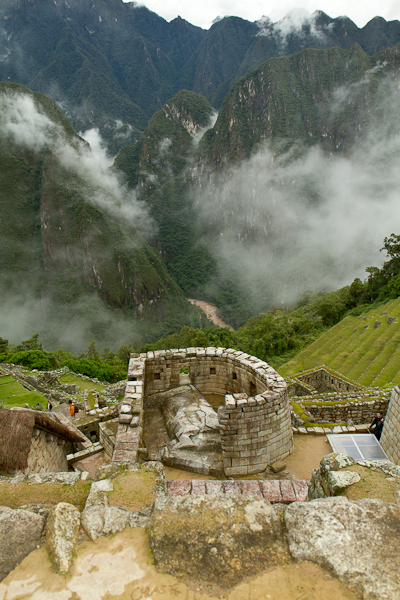
Temple of the Sun sits on top of the Royal Tomb, fitted into a natural cave.
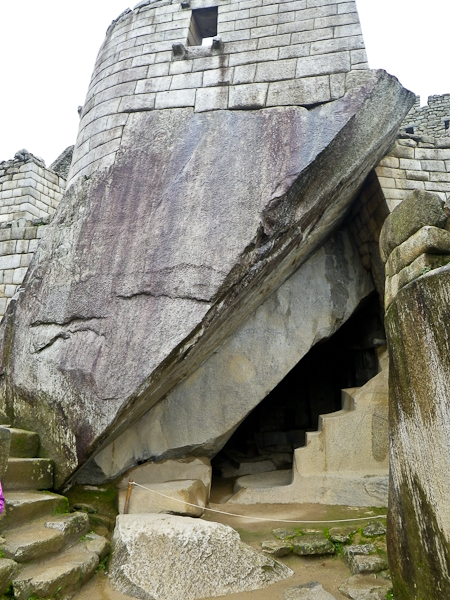
This tomb is a perfect example how the Inca used carved stones to enhanced the beauty of natural stones.
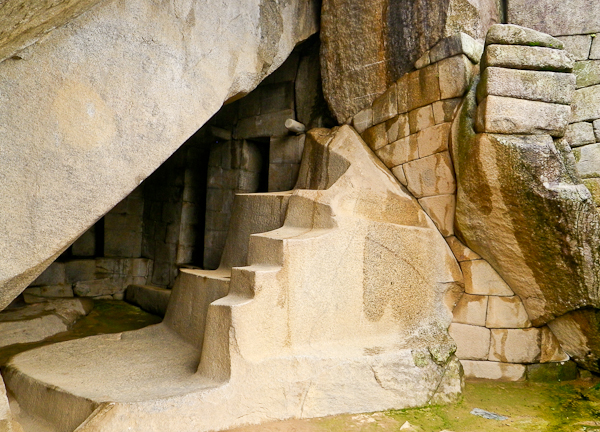
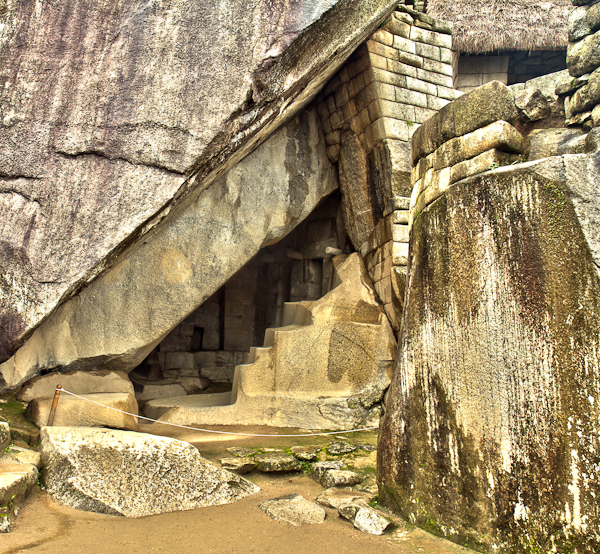
Temple of the Condor
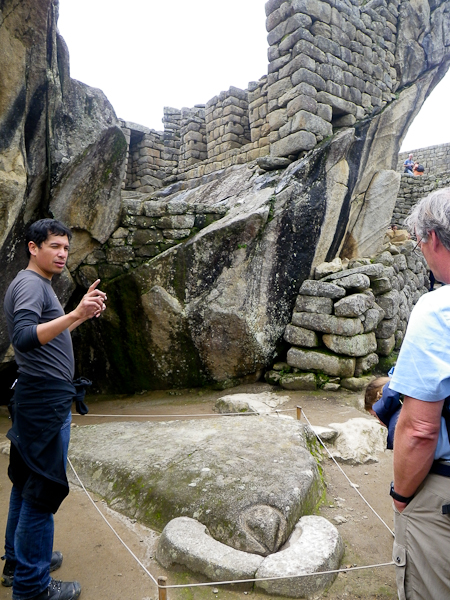
The large head on the ground in front of the temple entrance depicts the head of the condor. Below its wings is a cave.
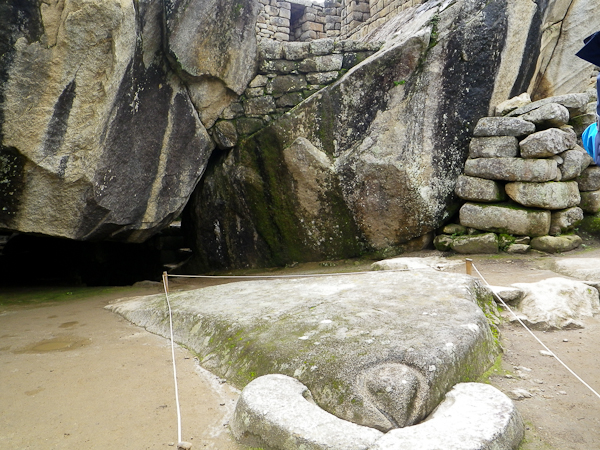
The wing of the condor can be seen below.
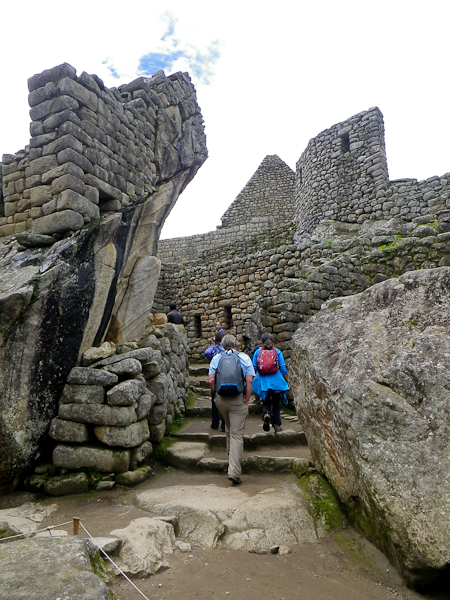
The Fountains
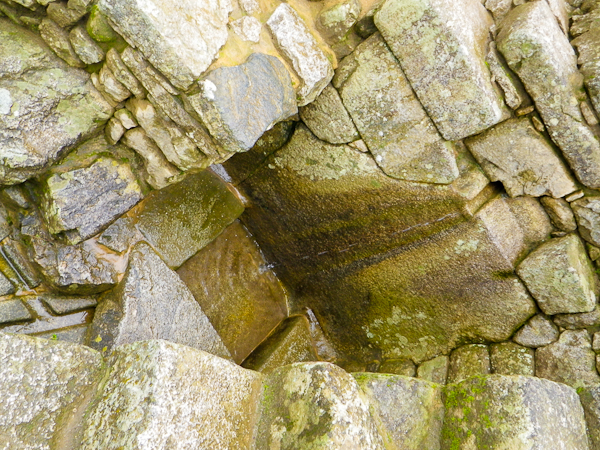
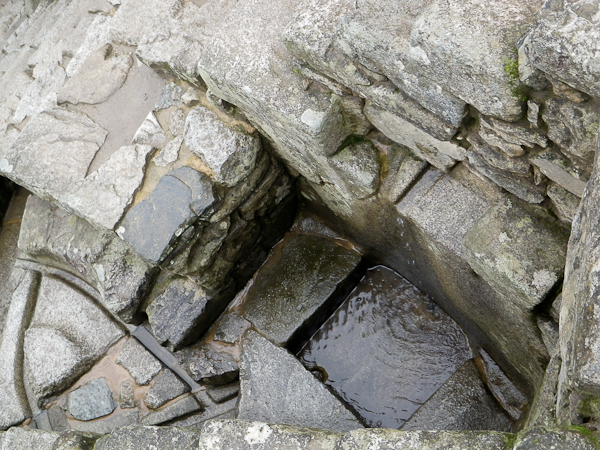
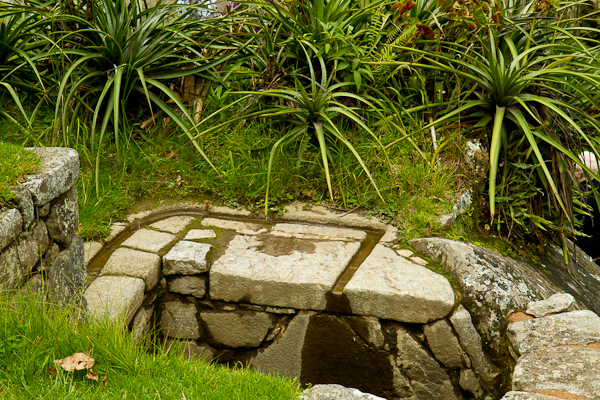
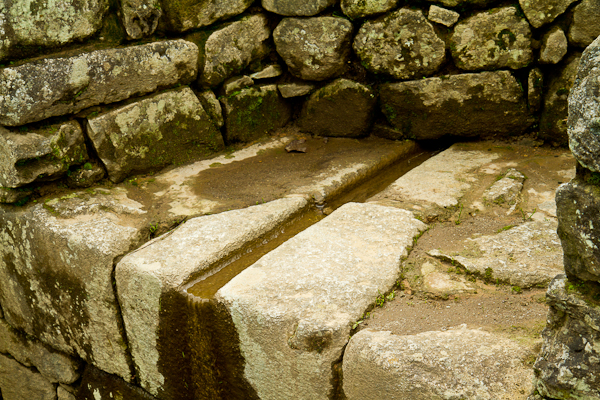
The Main Gate
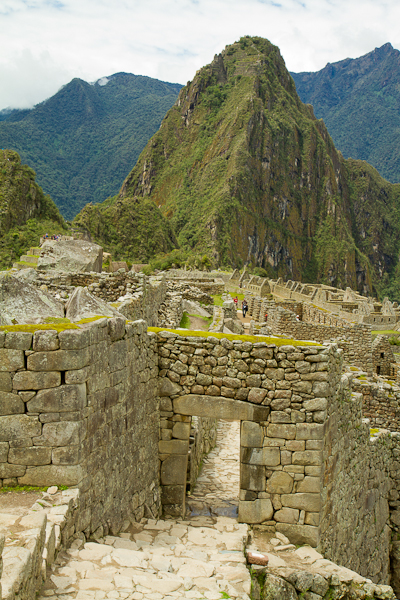
For those who hike the Inca Trail, the main gate (above seen from the outside, below from the inside) still offers the entrance to Machu Picchu.
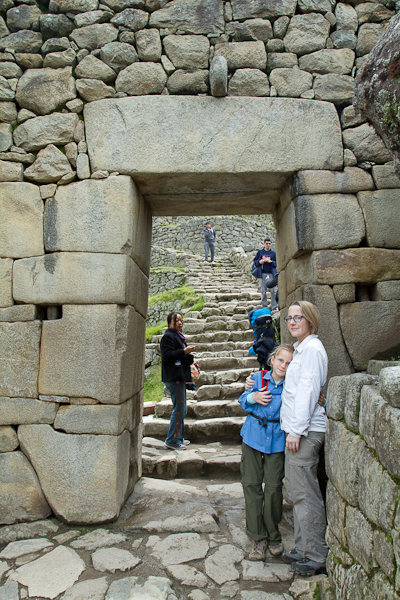
At Inca times, the gigantic door had locks and used to close / secure the city at night.
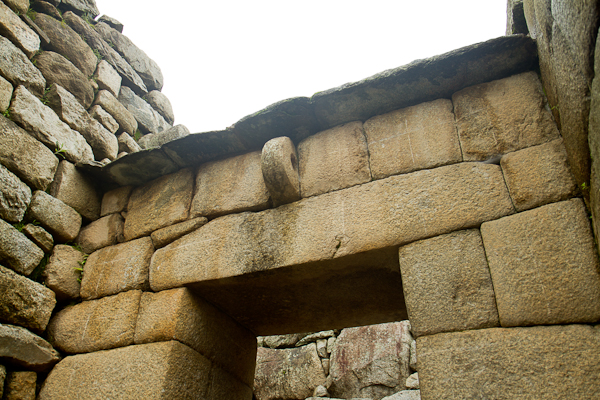
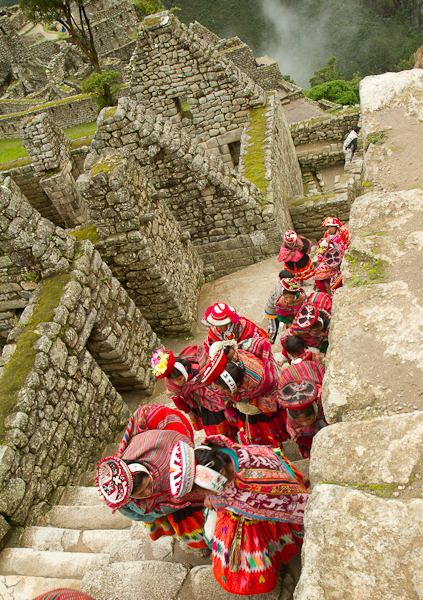
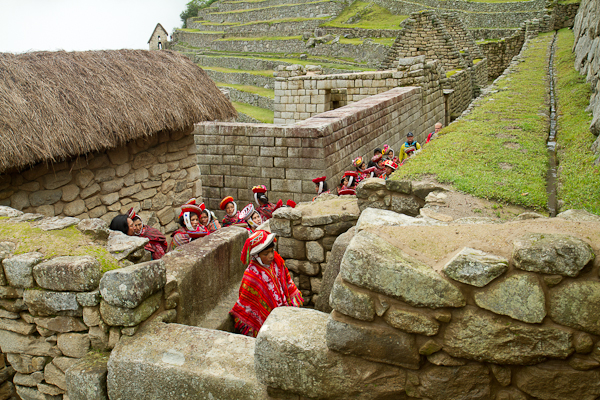
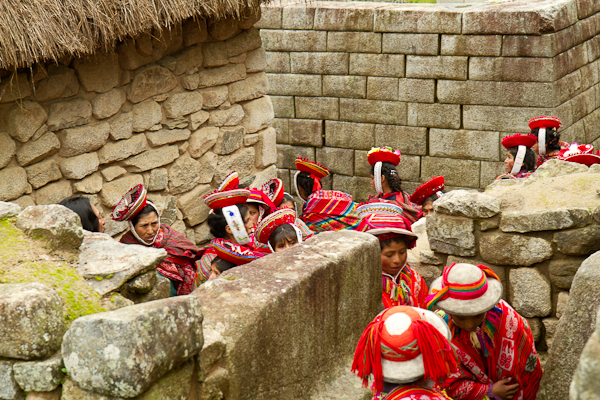
The Temple of the Three Windows
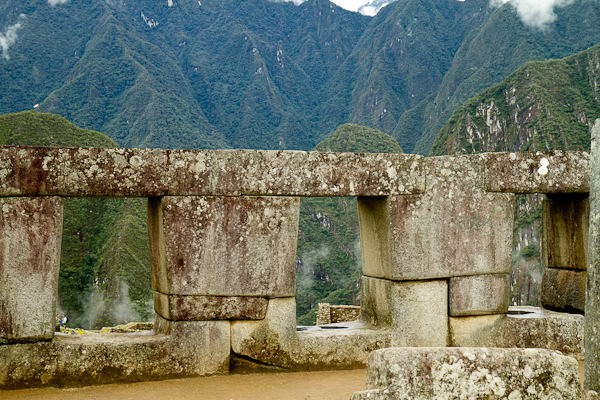
This Temple features three large trapezoid windows overlooking the main square of Machu Picchu.
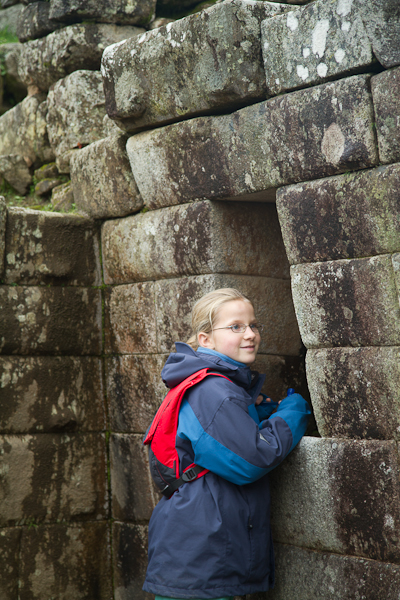
Many walls contain window-like niches which were probably filled with ritual ceramics or art.
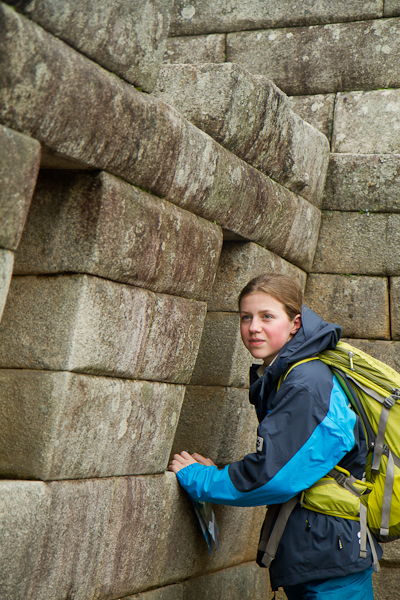
Intihuatana
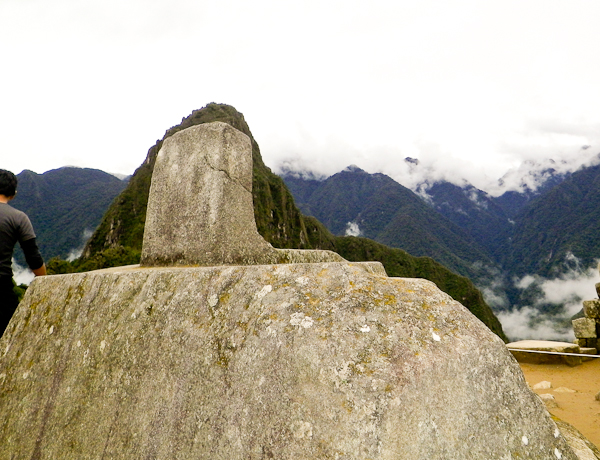
This modern looking sculpture was most likely the most sacred place within Machu Picchu. Theories of its use include solar observatory, sacrificial altar or a temple aligned with the surrounding mountains. Many call the Intihuatana the world's first abstract sculpture.
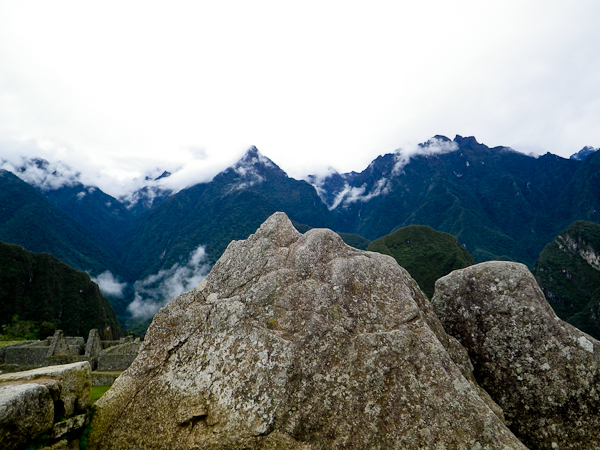
There are other natural rocks that were carved to repeat the surrounding mountains.
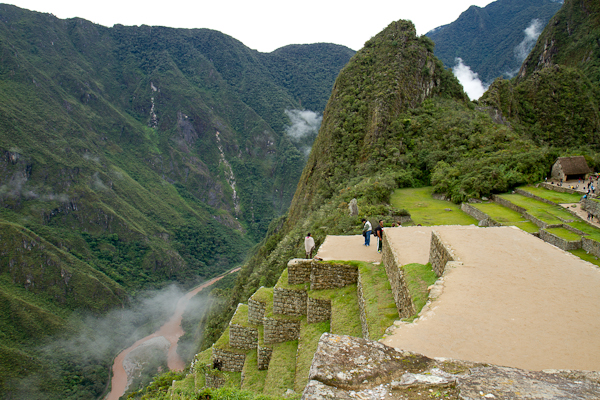
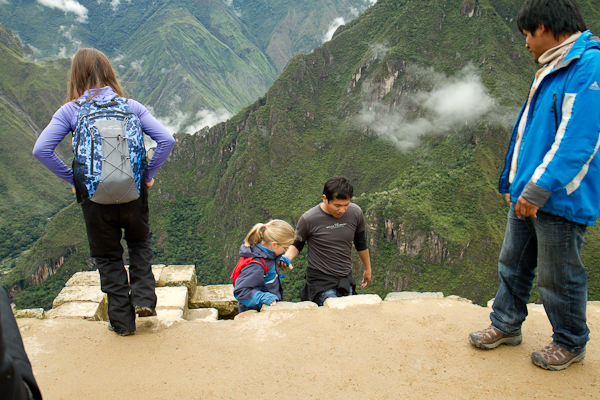
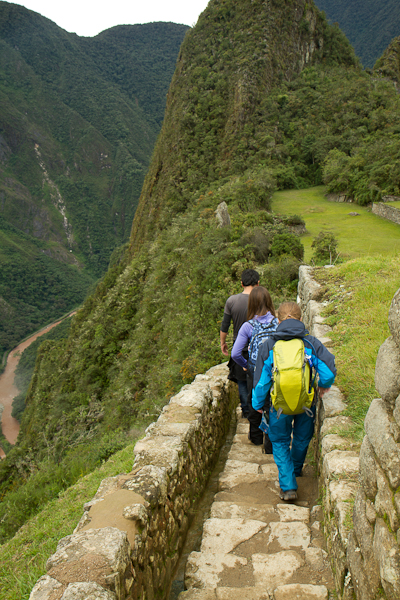
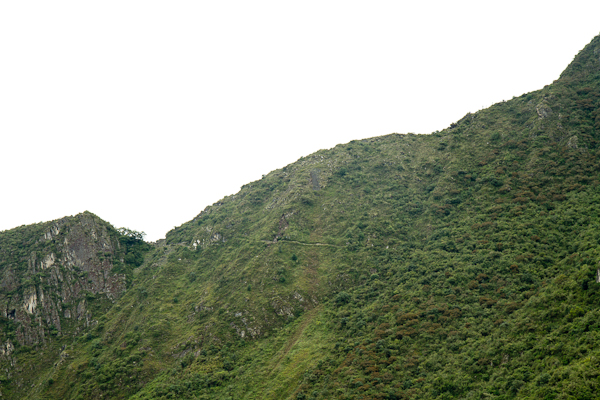
Criss-crossing Inka trails connect Machu Picchu with at least 8 other Inca cities.
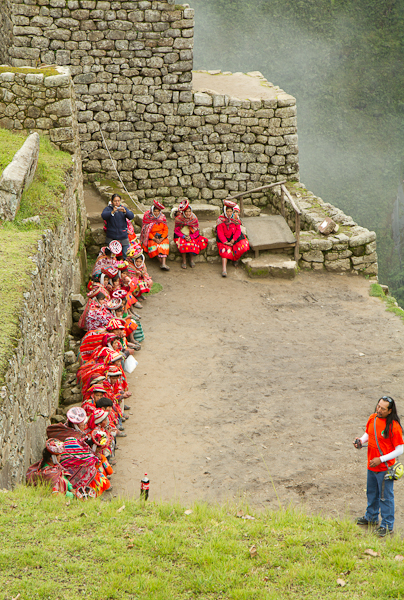
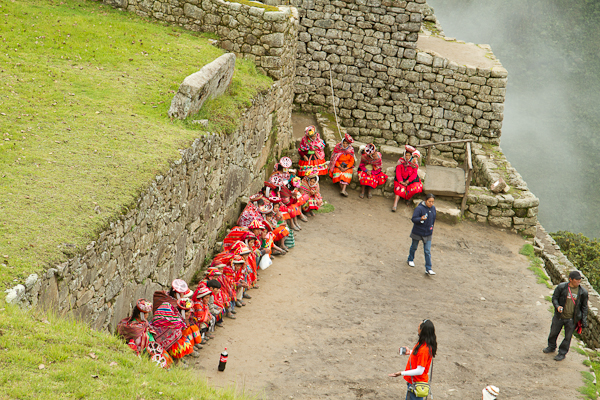
Lunch break:


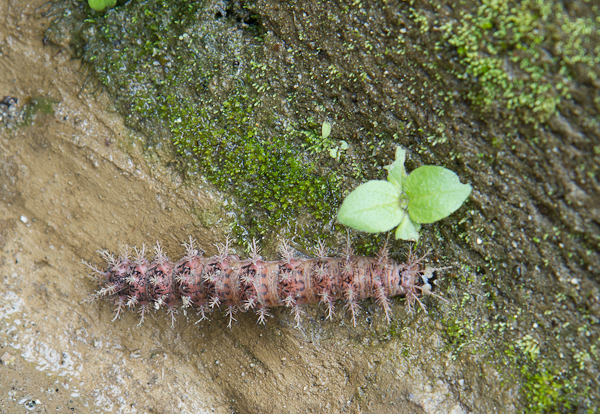
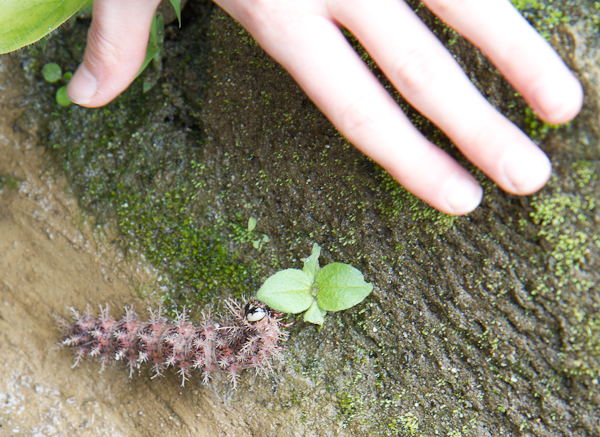
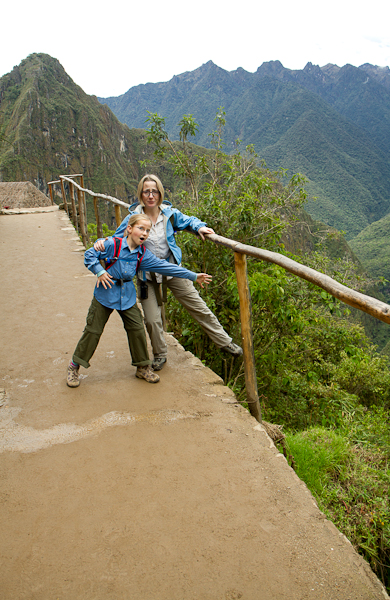
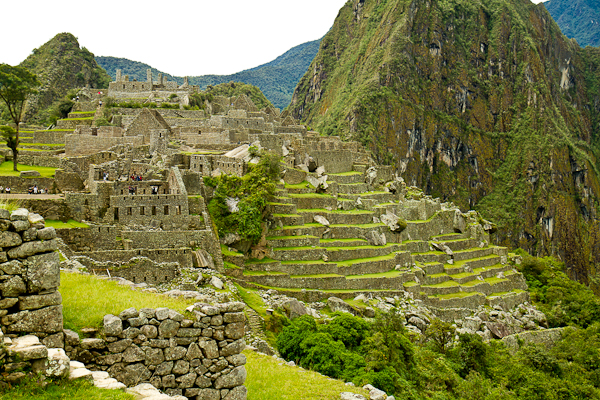
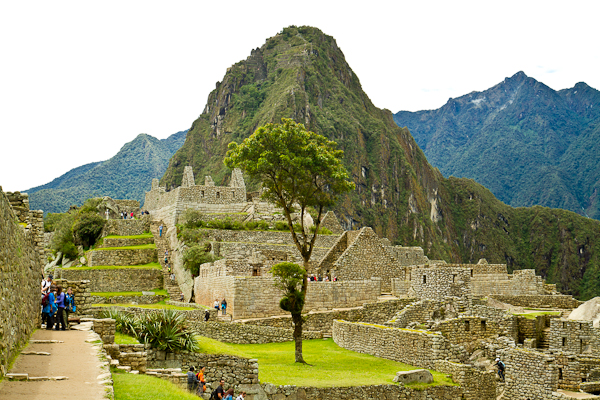
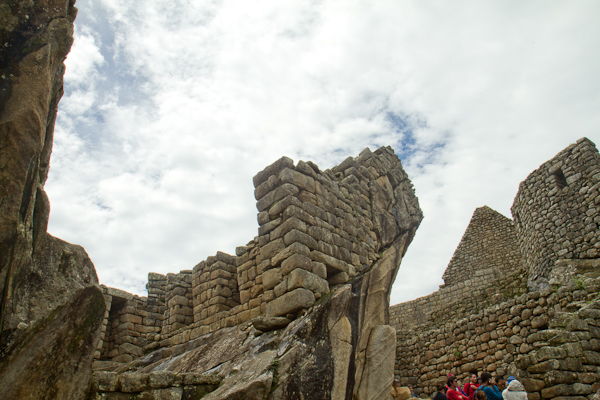
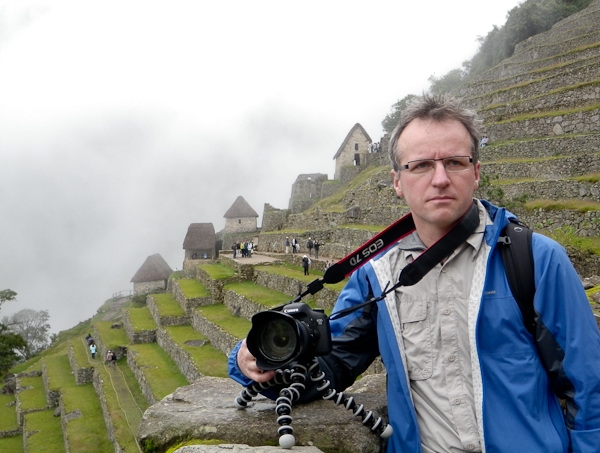
Caretaker's Hut
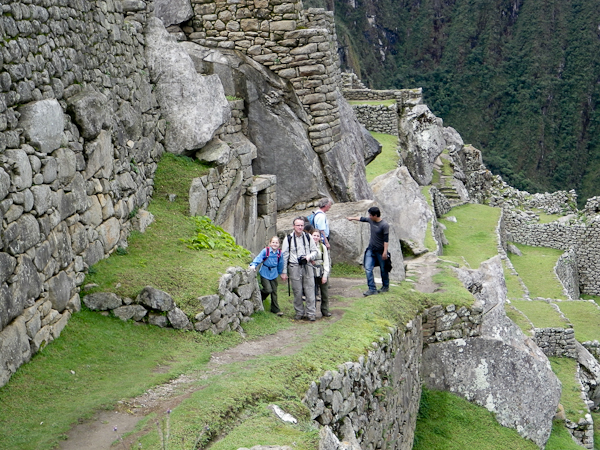
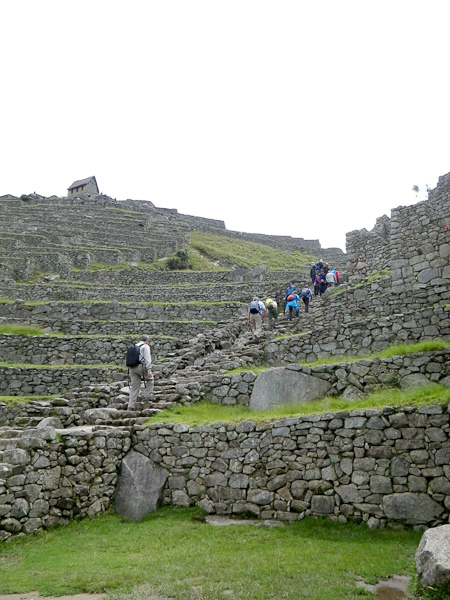
After lunch, we hiked up to the Gatekeeper's hut (below) - very slowly as we still experienced a headache.
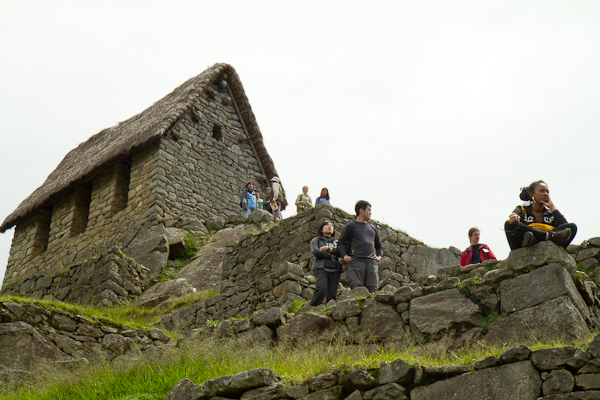
The view from this high point over the city is gorgeous and famously used as a postcard motive.
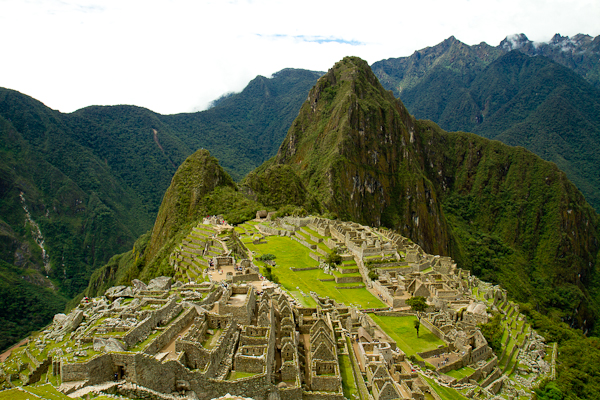
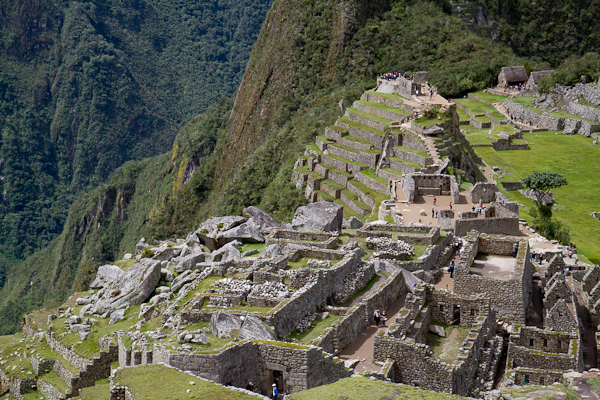
Machu Picchu is one of the best examples of architecture integration within the landscape.
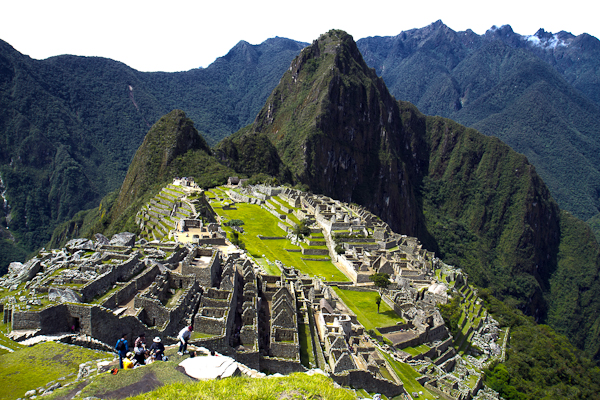
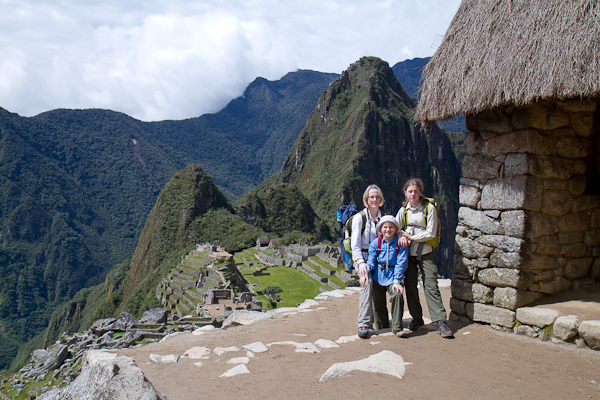
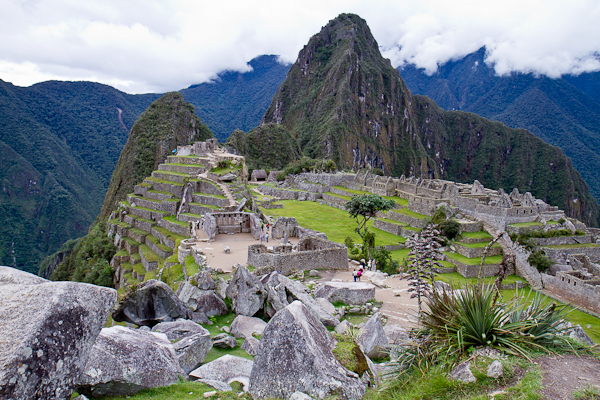
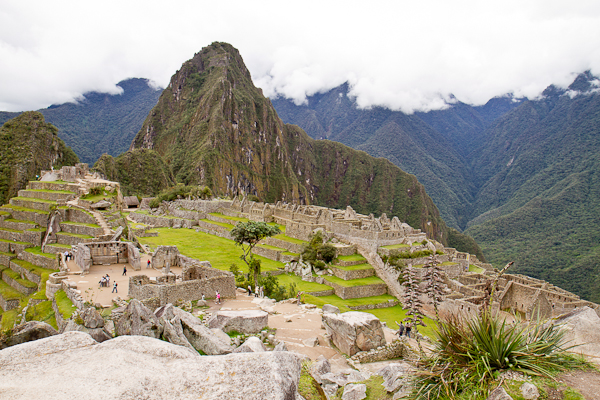
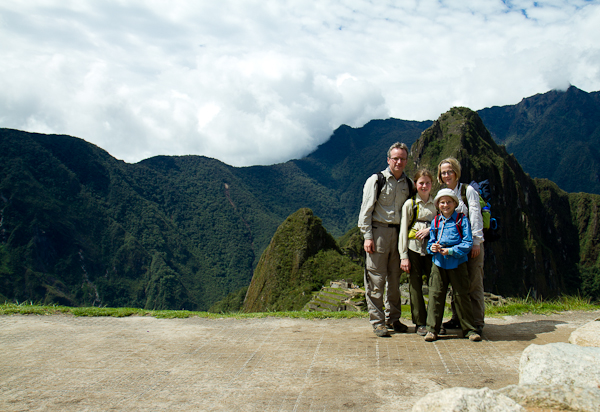
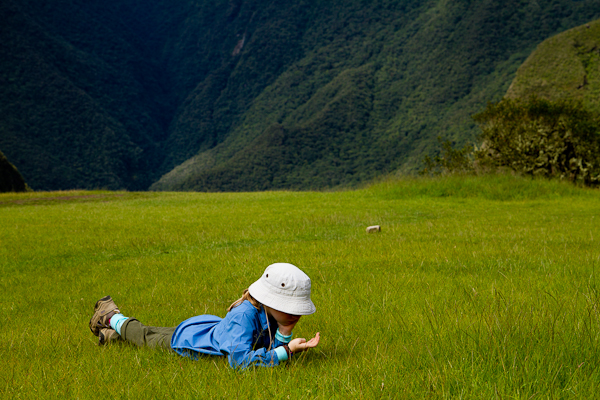
A group of wild llamas made Alexandra's day, whereas Sophia was totally happy observing insects.
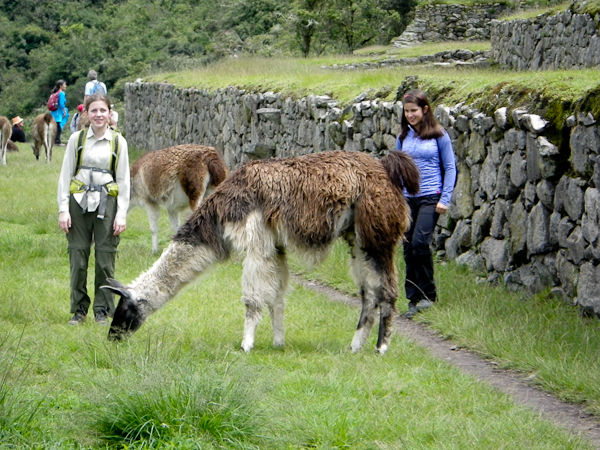
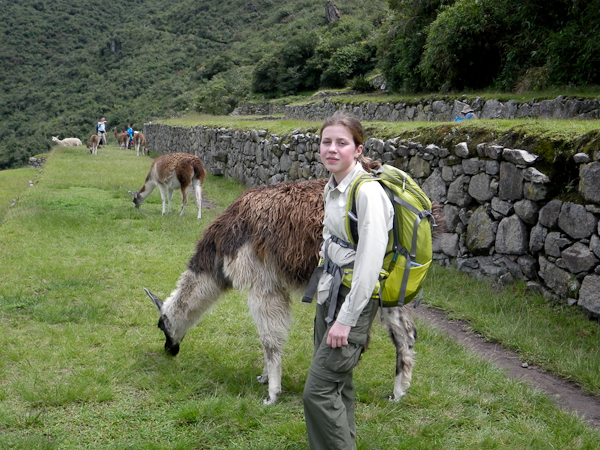
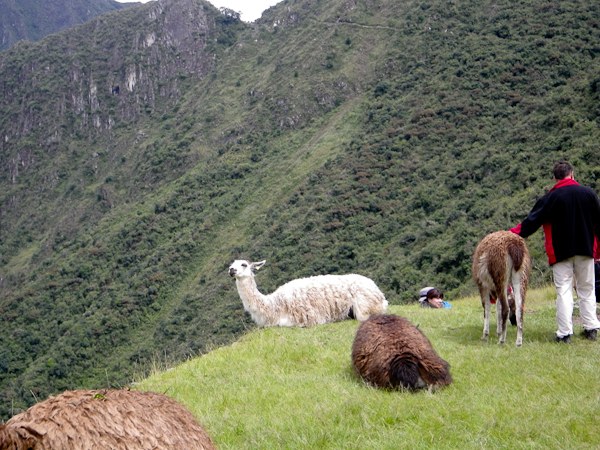
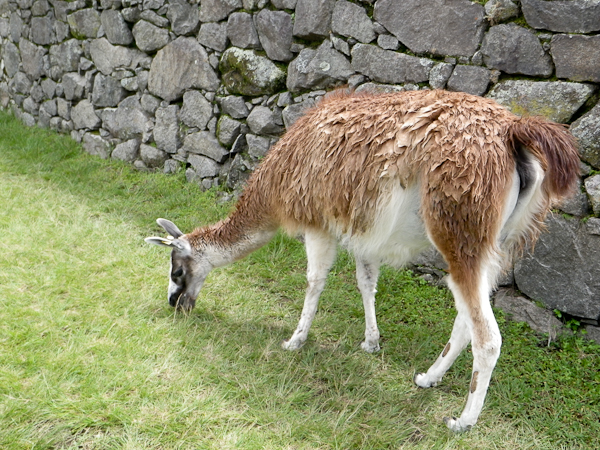
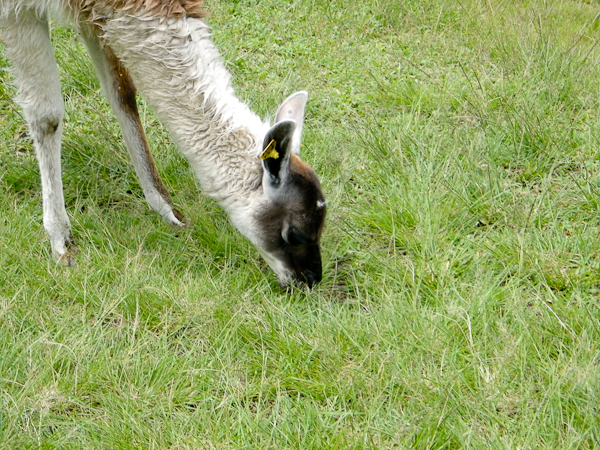
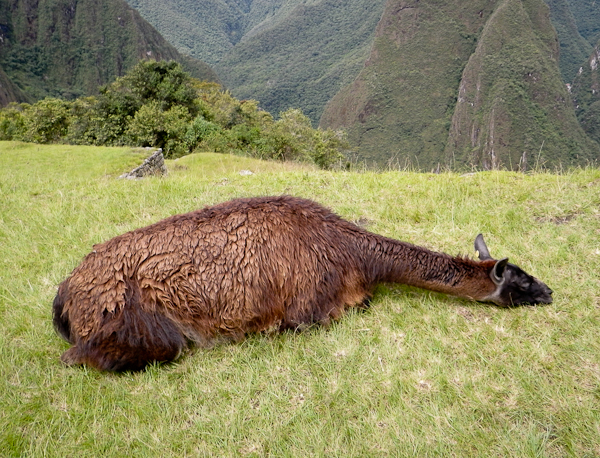
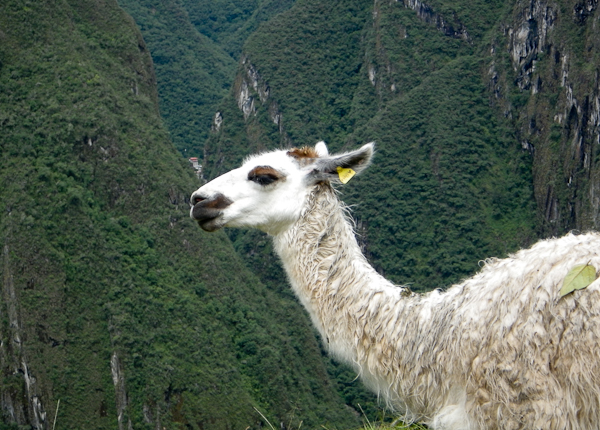
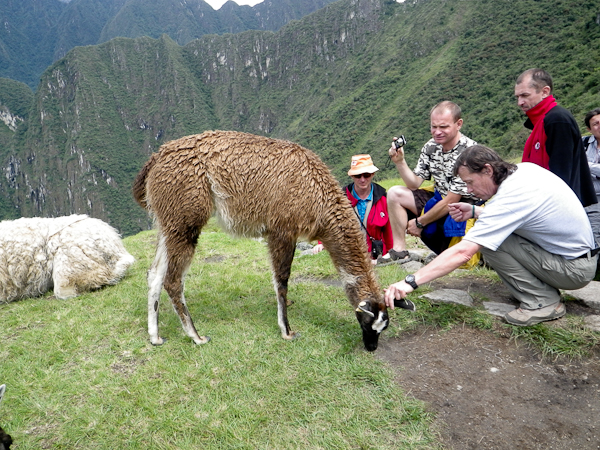
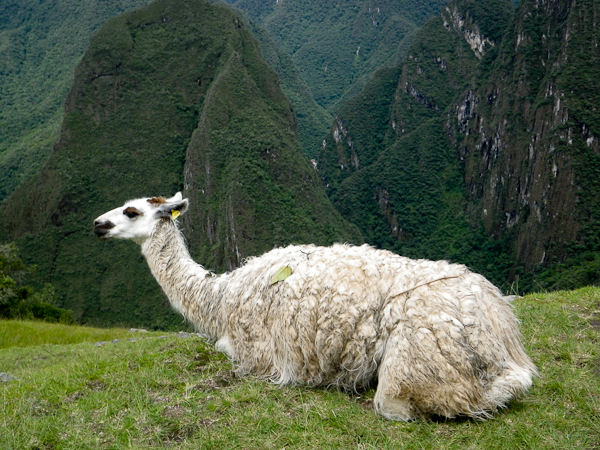
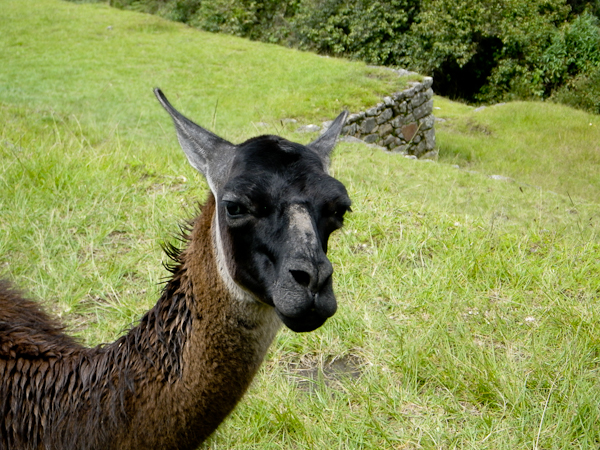
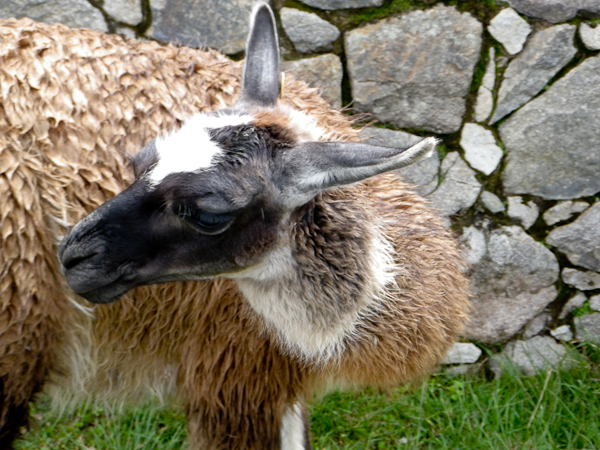
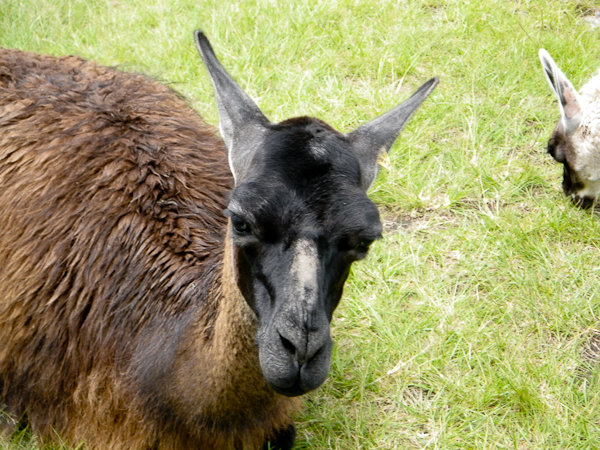
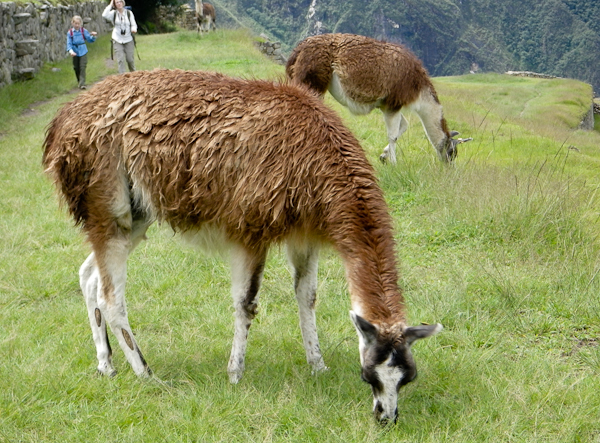
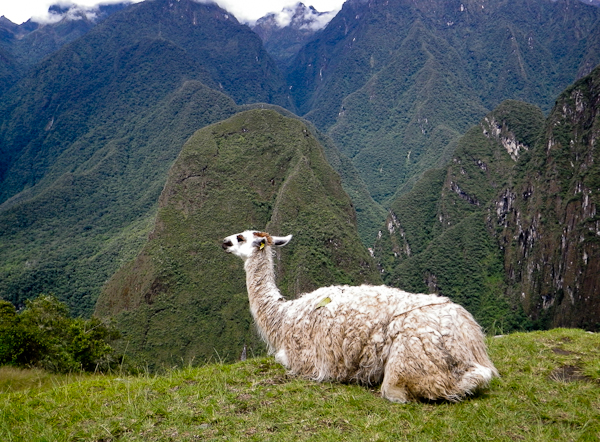
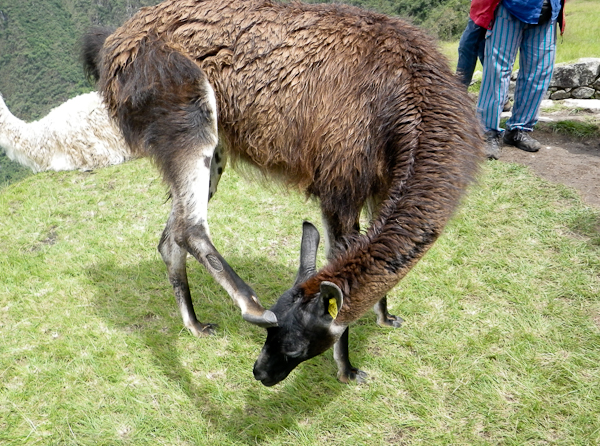
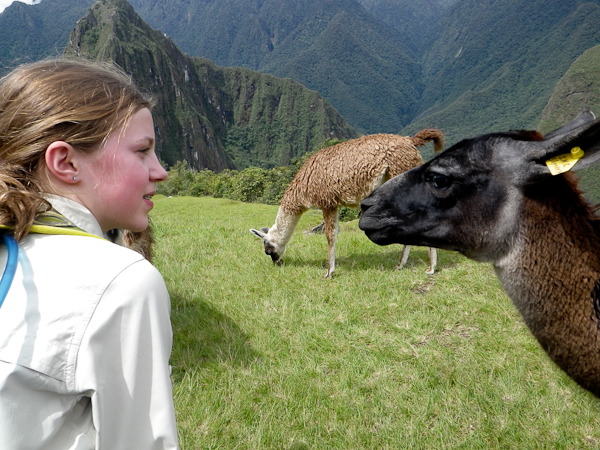
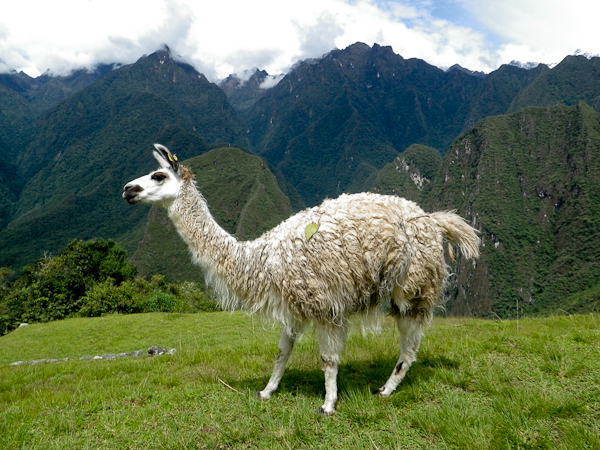
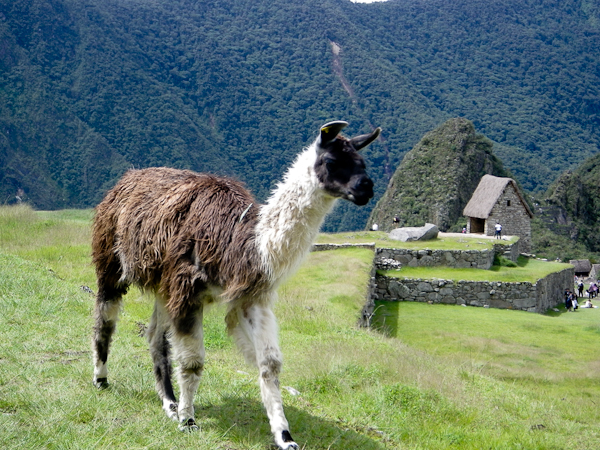
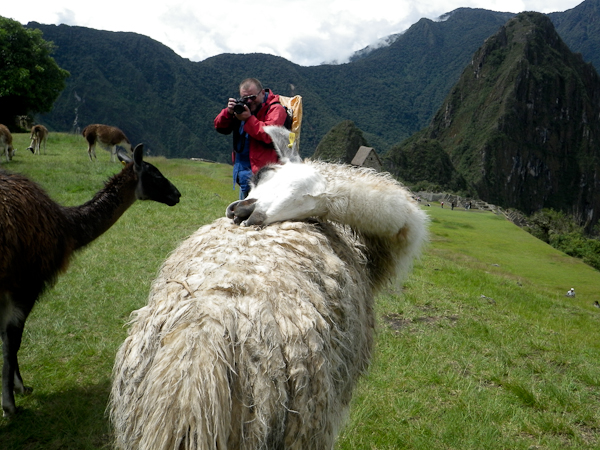
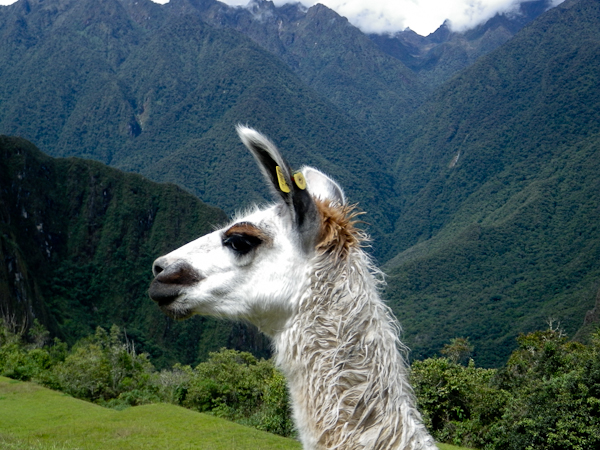
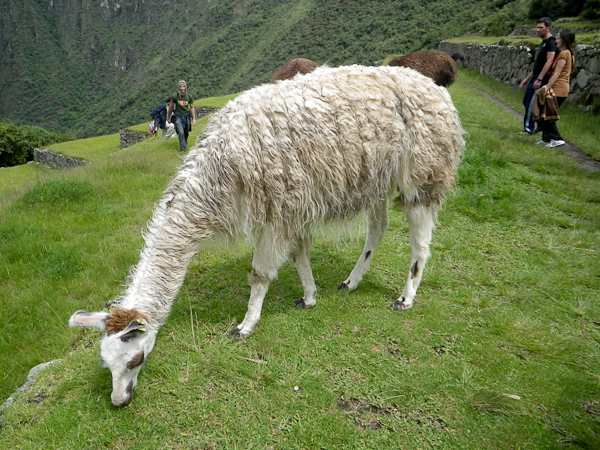
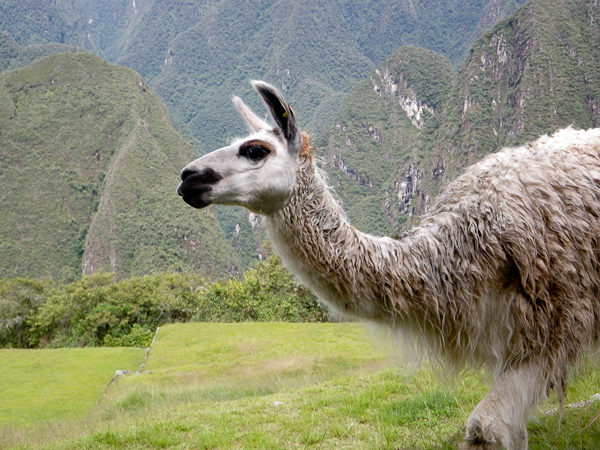
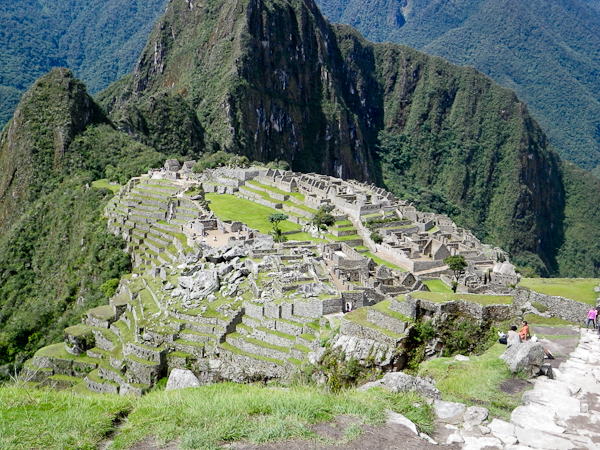
After we climbed down from the overlook, we continued exploring the different pathways and sections.
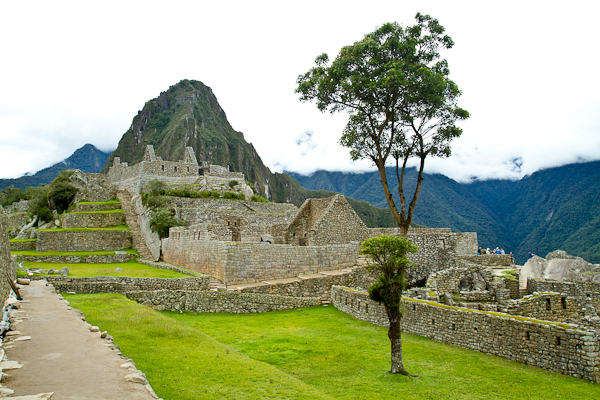
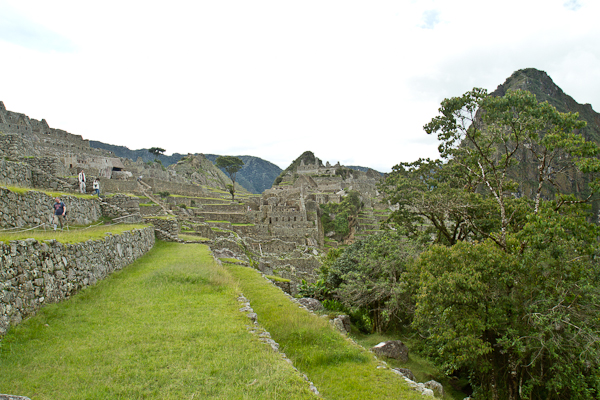
"...Machu Picchu itself, you will be unsurprised to hear, was a destination worth a week’s walking—a sublime ruin that serenely exceeds its hype. Among the Incas’ many talents was an evident knack for site selection; historians and anthropologists believe that mountains were of special significance in Incan religion, and most of the ruins we visited in Peru—old temples or retreats for the high-born—sat on high ground, with beautiful vistas. Even so, the setting of Machu Picchu is unmatched, and mesmerizing. Jagged green mountains surround the ruin closely, like the spikes of a crown. A few reach above the ruin; several lie below.
One can see, at Machu Picchu, many of the technological advances that allowed the Incan empire to rise so quickly and decisively in the 15th century, before it was brought low just as abruptly by European steel, horses, and disease. The ancient road coming up over a high ridge, through the Sun Gate, and into the heart of the settlement hints at the vast, sturdy road network that once spread throughout the empire. (Supply depots, built at regular intervals along these roads and stocked with food, spare sandals, weapons, and other sundries, allowed armies and officials to travel light, at a pace that was unprecedented. Runners, stationed all along the roads, carried news and orders more quickly still.)
Agricultural terraces cling to the steep slope below the city. (The Incas were, above all, master farmers, and their clever land use, experimentation with different soil mixtures, and skill at growing different crops at different altitudes allowed them to offer more-bountiful harvests to neighboring tribes that acceded to their dominion.)
The buildings themselves, which are believed to have housed 500 people—royalty, courtiers, priests—were famously constructed from stone blocks so precisely carved and fitted that they required no mortar, and were so well engineered that many have withstood centuries of storms and earthquakes. Our presence among them, and, as the day wore on, that of a steadily rising tide of other tourists, speaks to a different sort of assault. Yet even when mobbed, the city retains its grandeur. Walking through it, and staring out into the distance, one cannot help but wonder what another 100 years of empire might have produced, had Pizarro never landed..."
From: Five-Star Trek. A pampered tour through the Peruvian Andes. By Don Peck
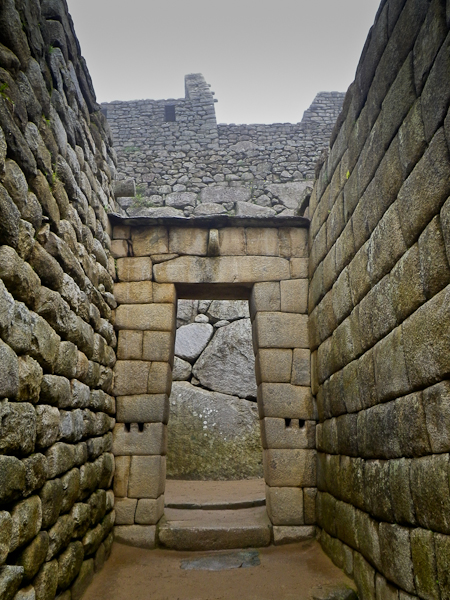
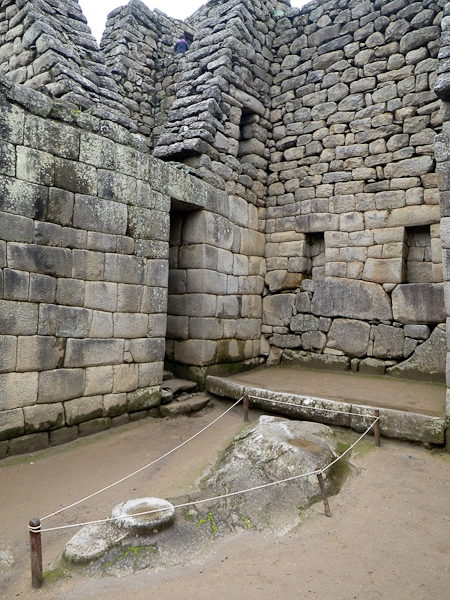
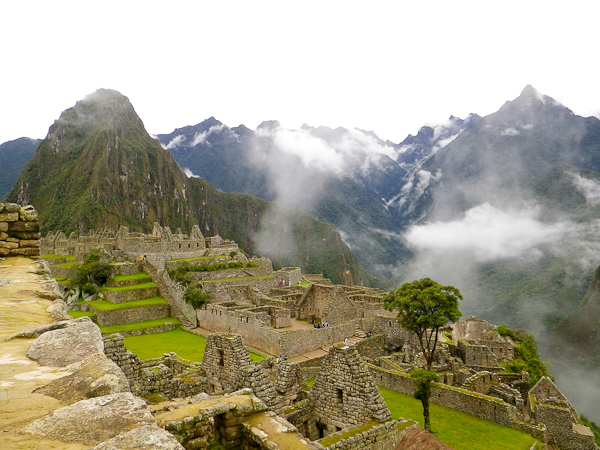
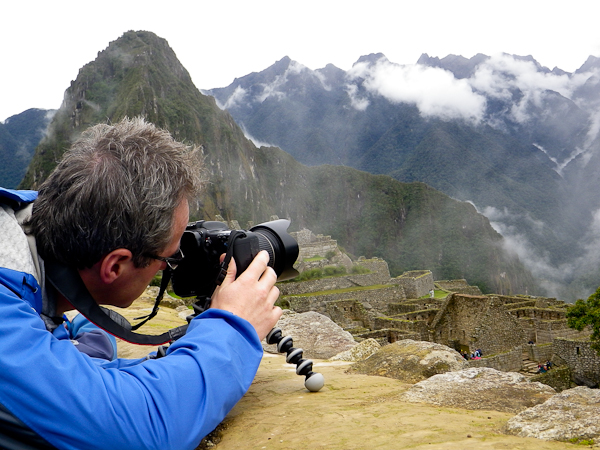
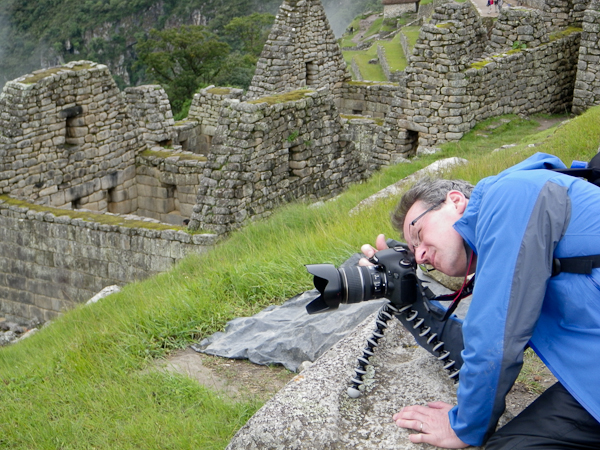
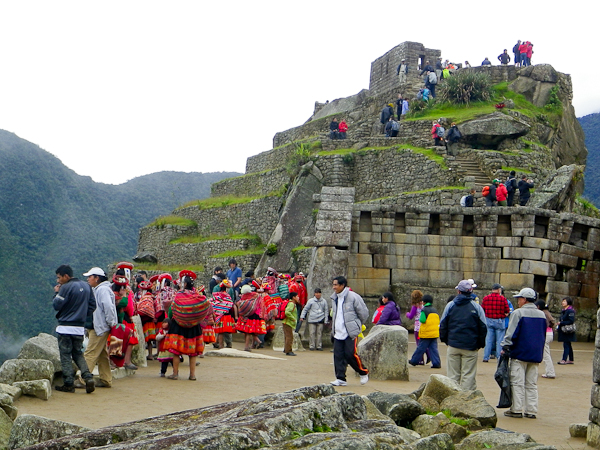
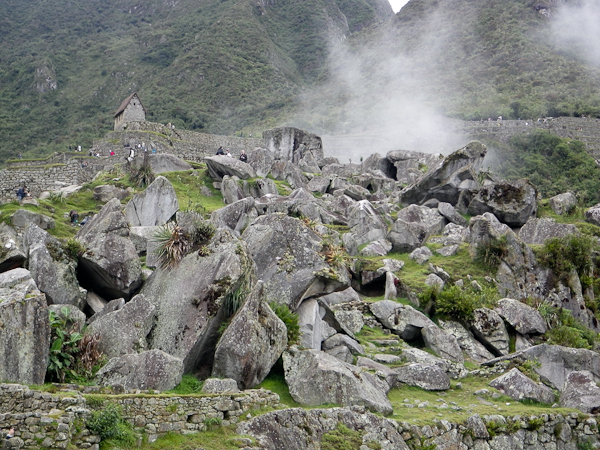
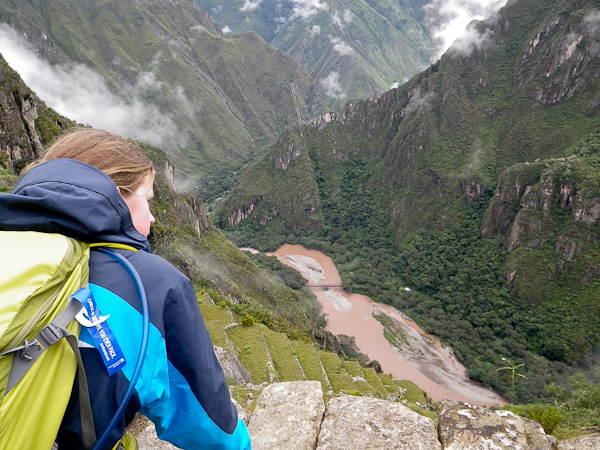
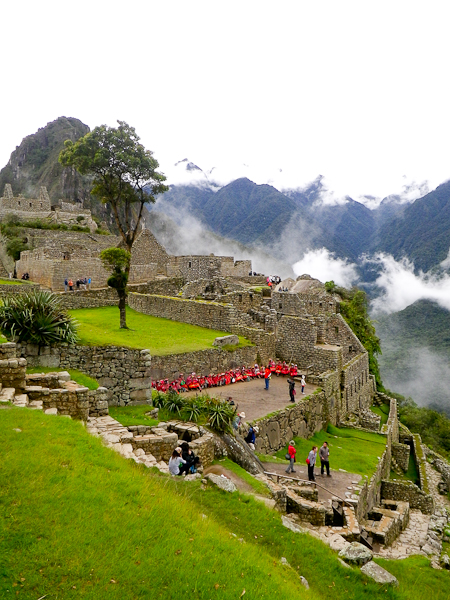
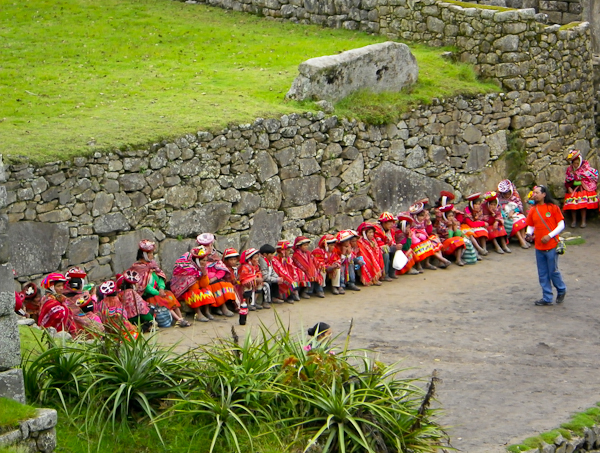
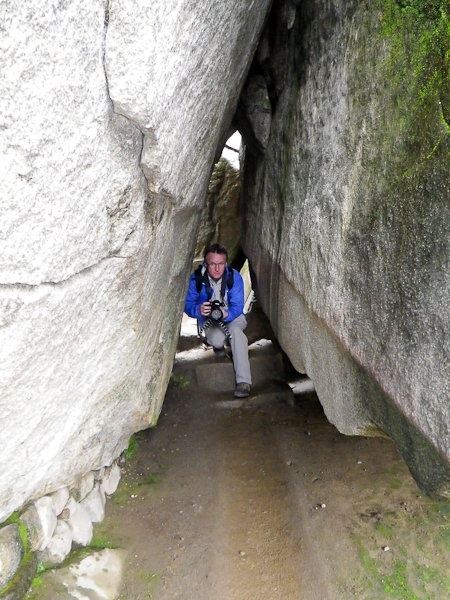
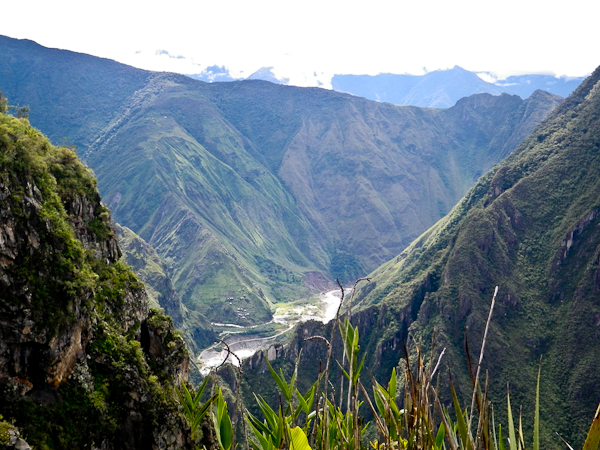
Overlooking the Urubamba River: All building materials were carried up the mountains from the river bank.
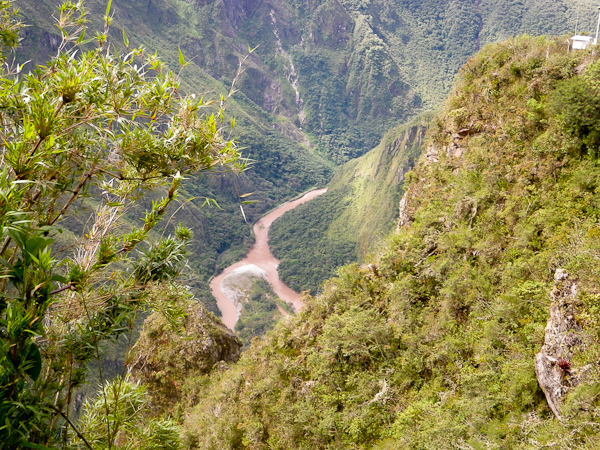
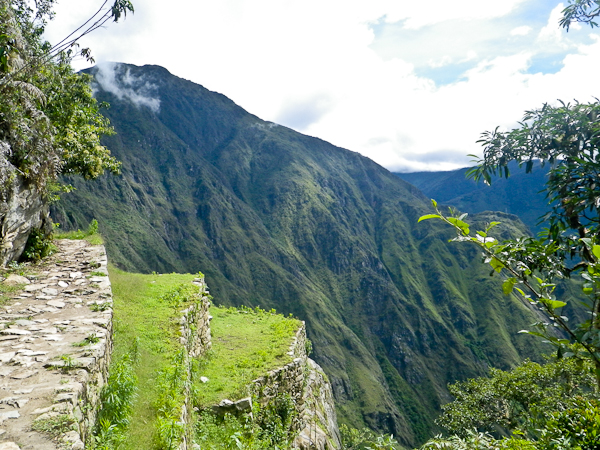
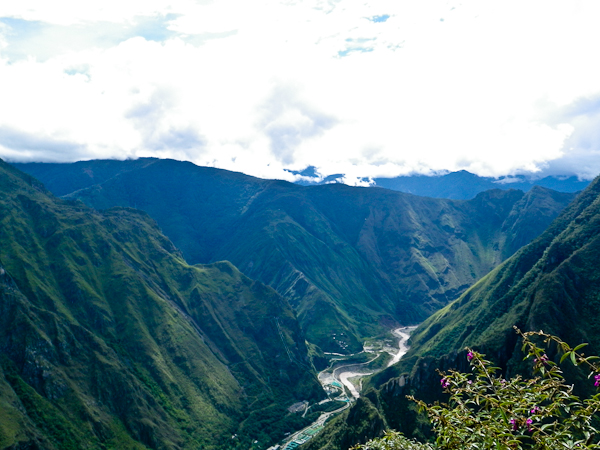
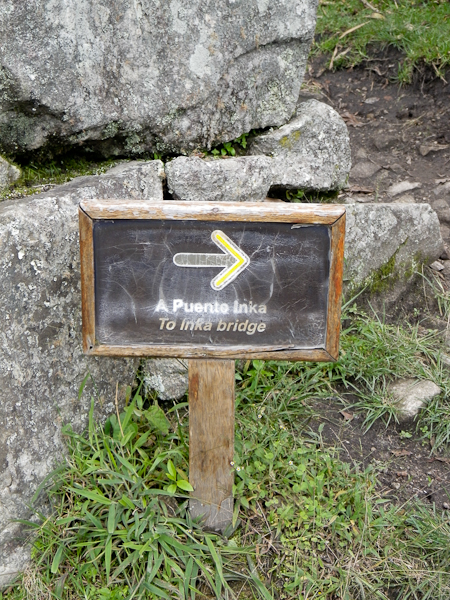
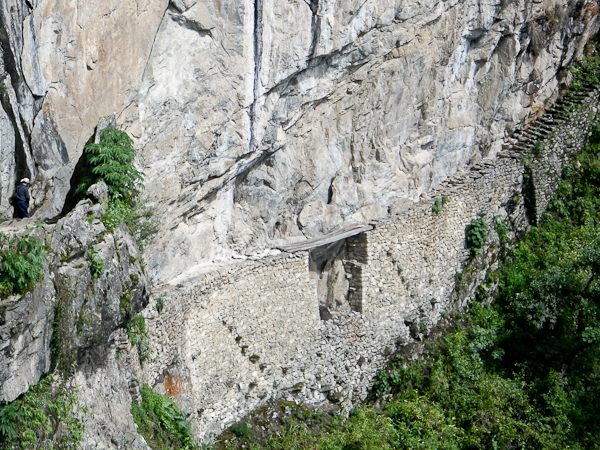
The Inka draw bridge.
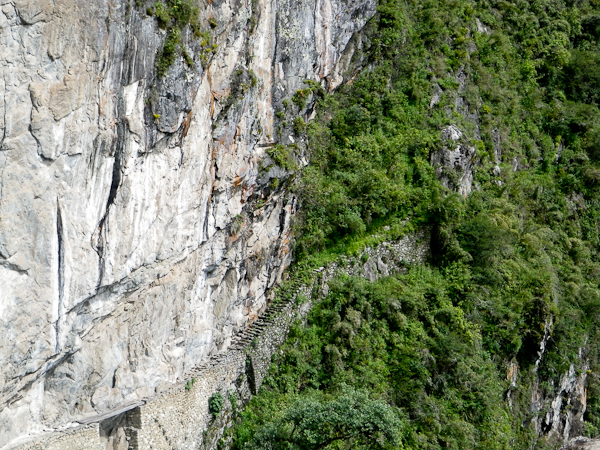
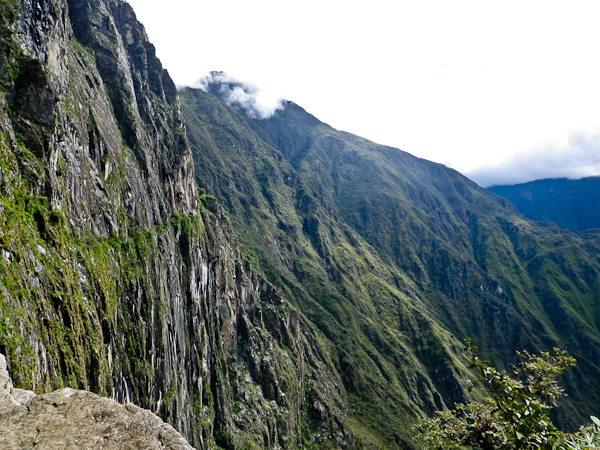
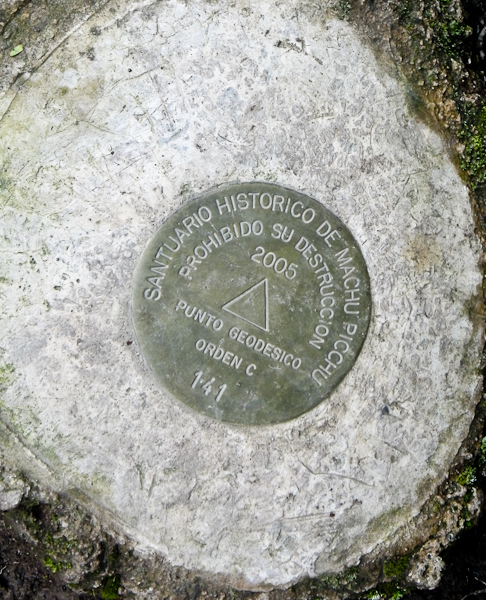
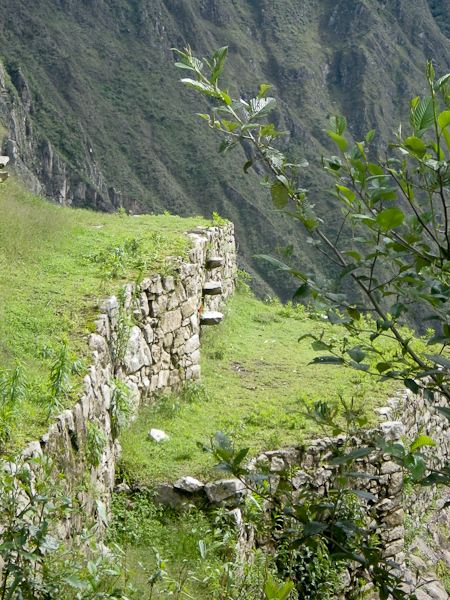
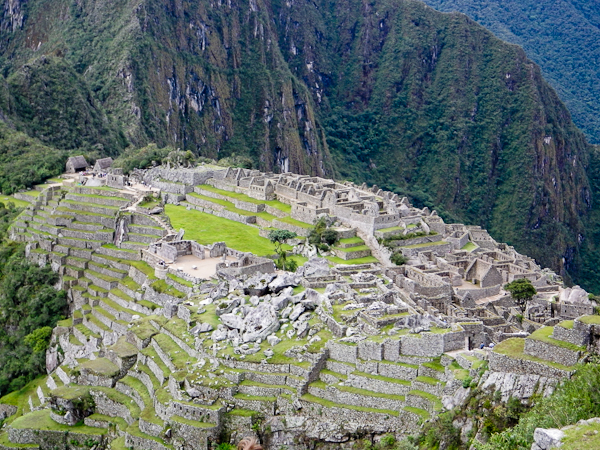
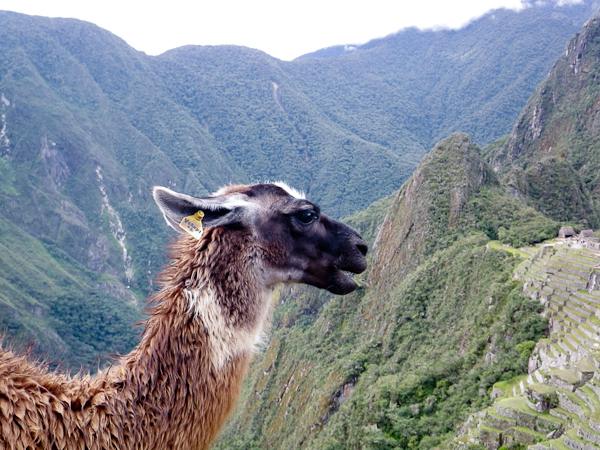
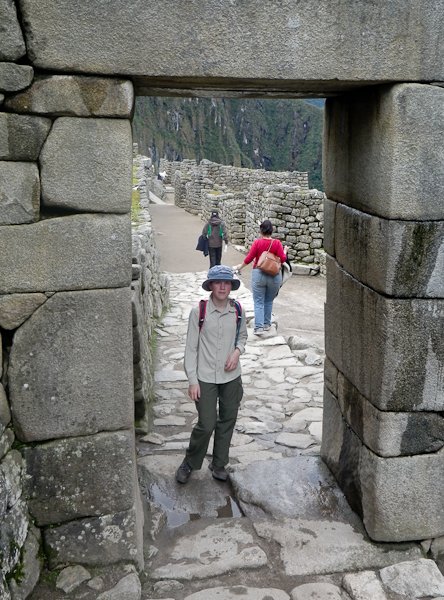
More information:
http://www.peru-machu-picchu.com/
Wikipedia: http://en.wikipedia.org/wiki/Machu_Picchu
UNESCO: http://whc.unesco.org/en/list/274
Goverment Website: http://www.machupicchu.gob.pe/

At 4 pm, we all met again in Aguas Calientes (or Machu Picchu Pueblo)—a small town with no car access, deep in the Urubamba river valley. All visitors to Machu Picchu must come through Aguas Calientes.



After enjoying a hot shower at our hotel “Inti Inn”, we took some time to explore the alleys and look around the local market.

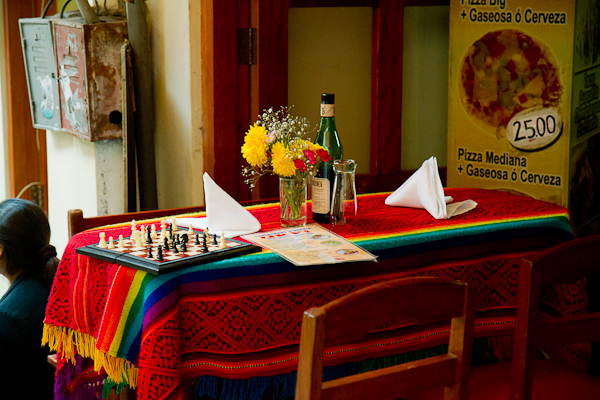
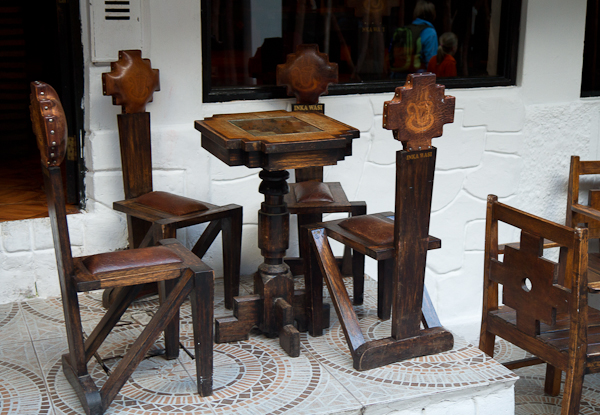
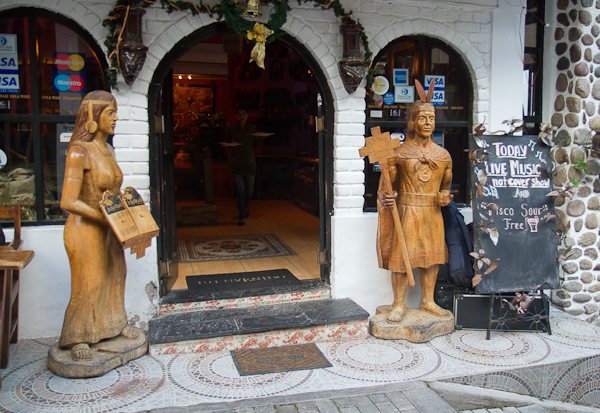
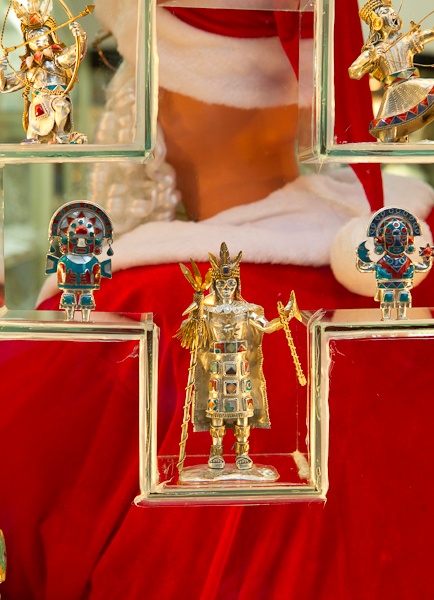
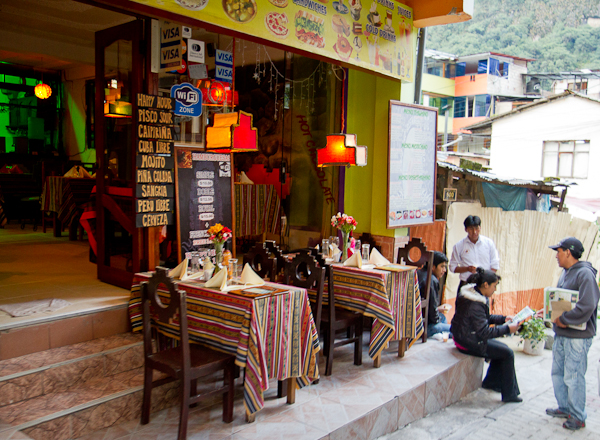
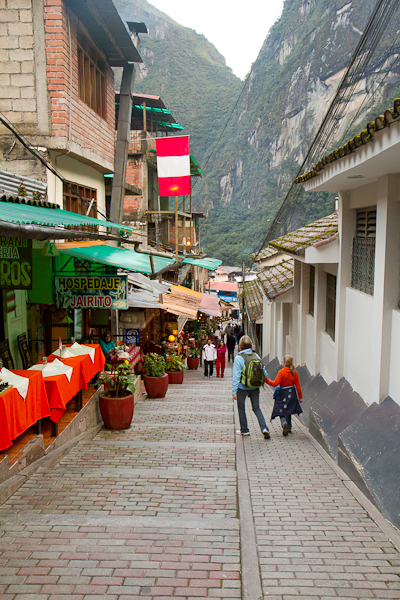
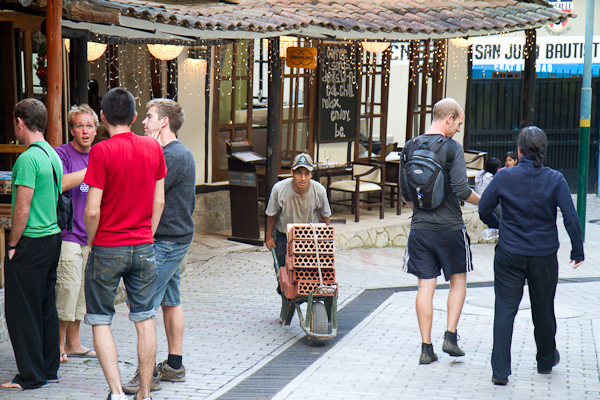
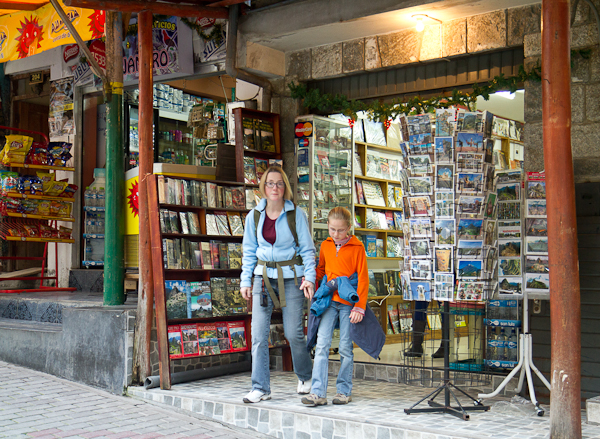
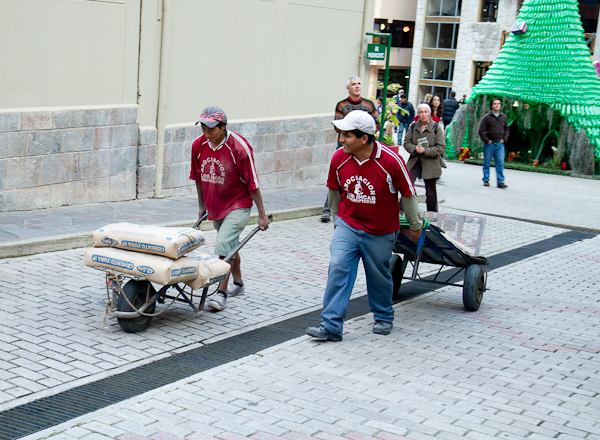
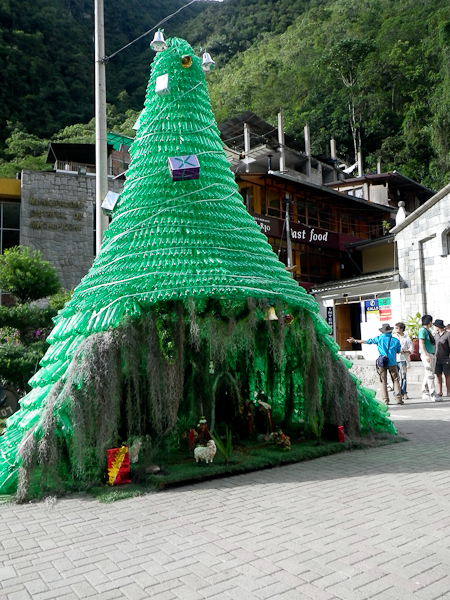
A nativity scene created with hundreds of Sprite bottles.
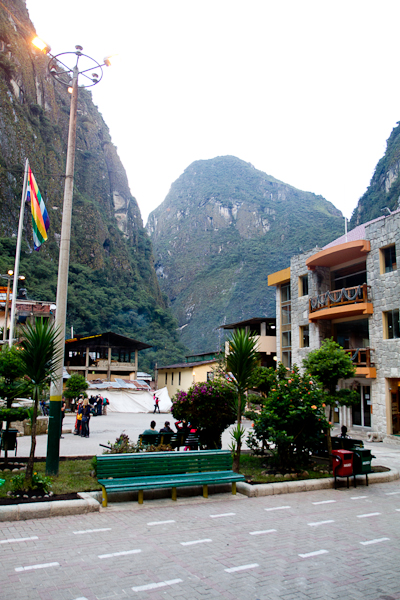
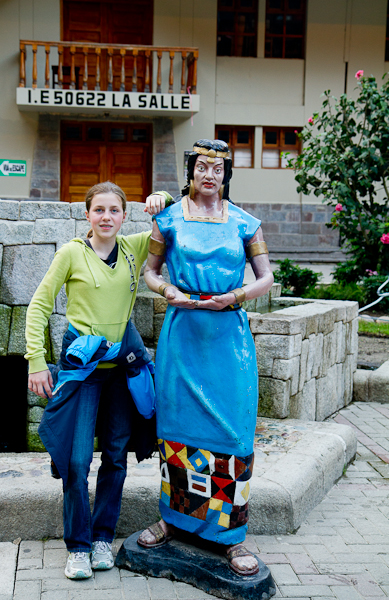
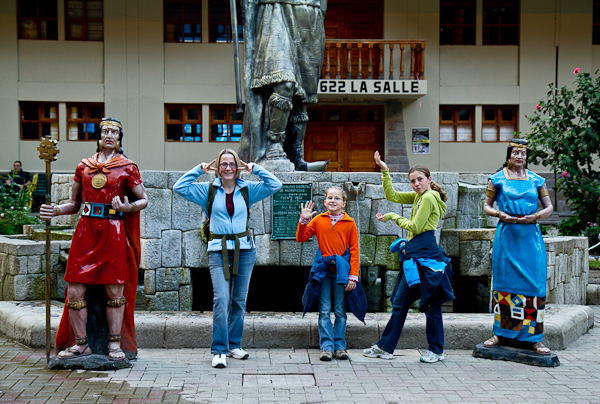
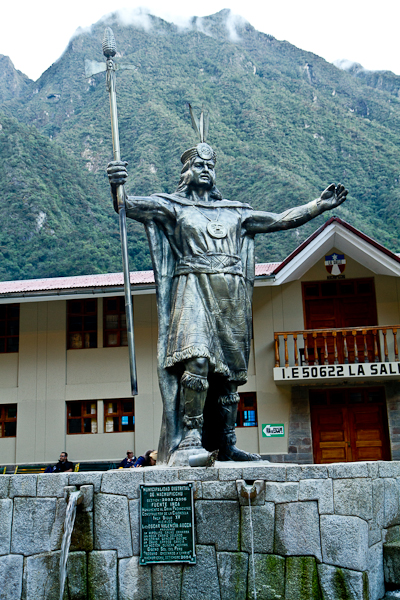
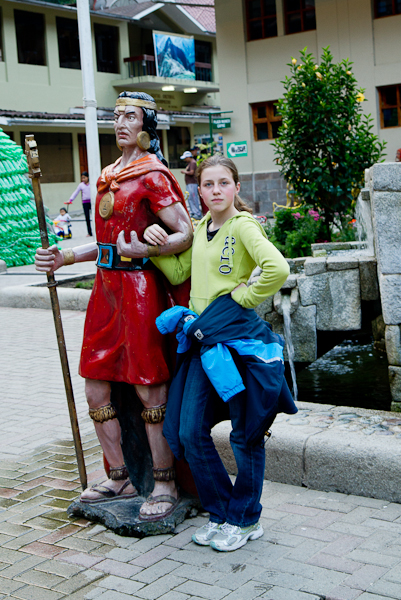
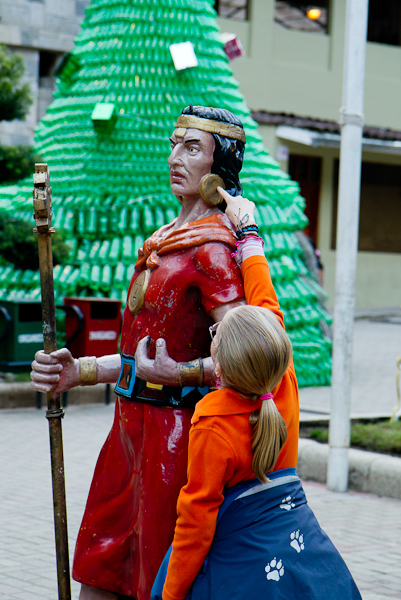
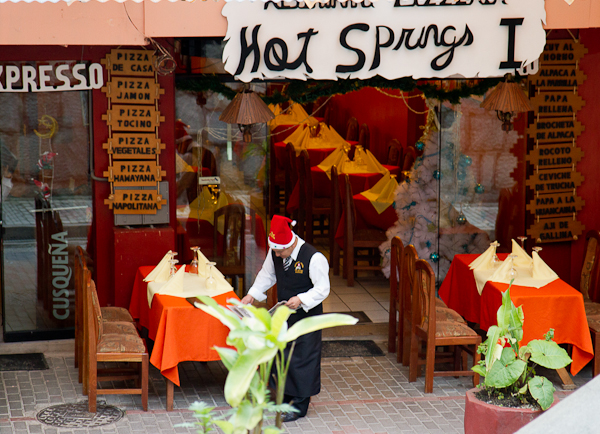
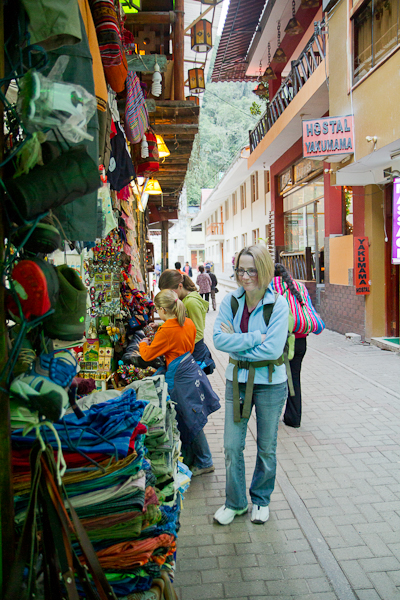
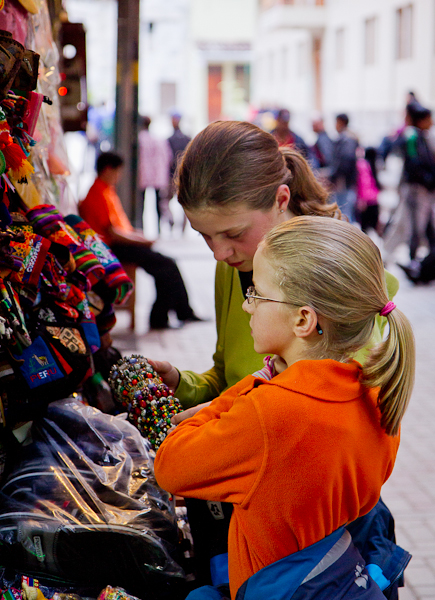
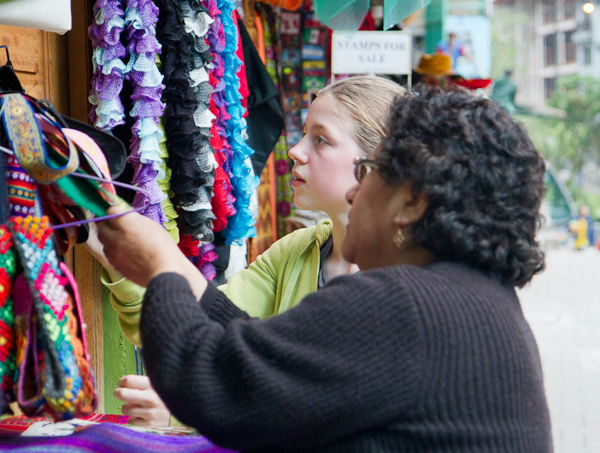
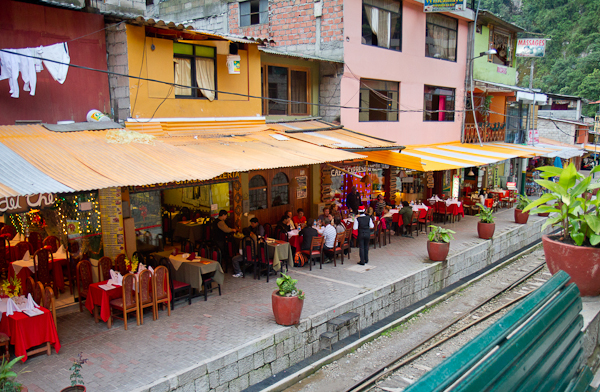
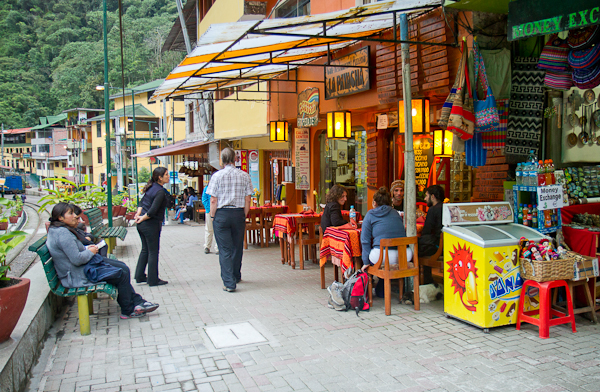
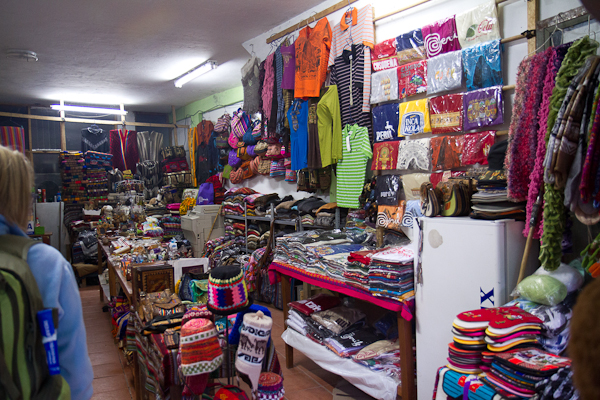
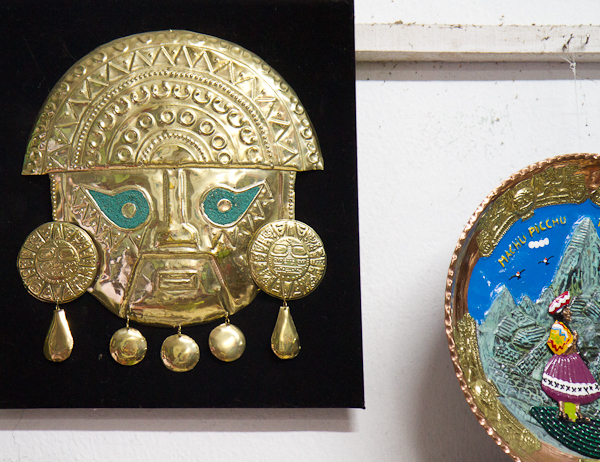
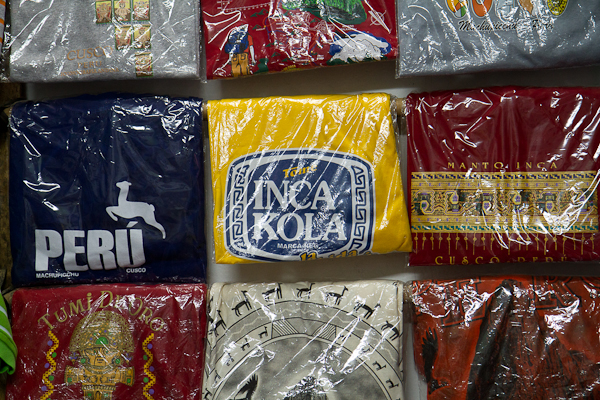
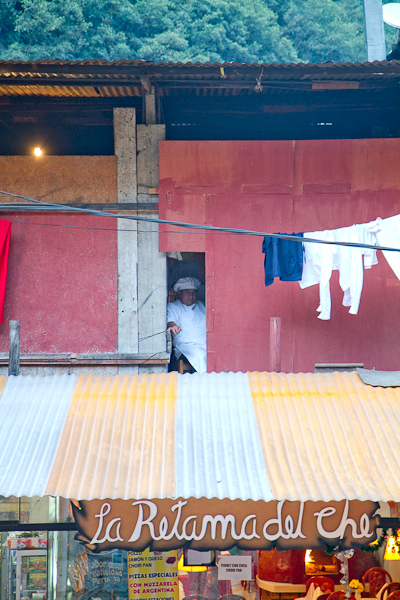
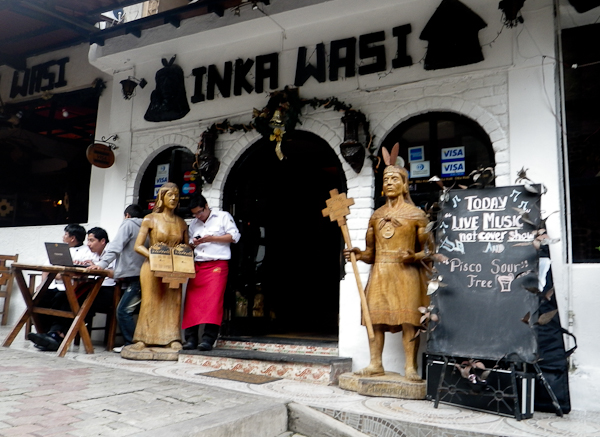
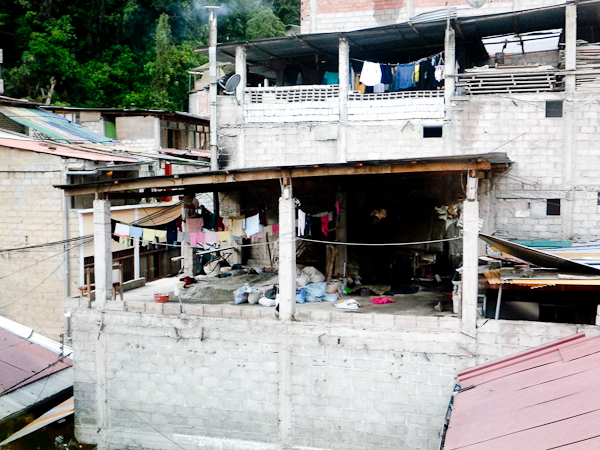
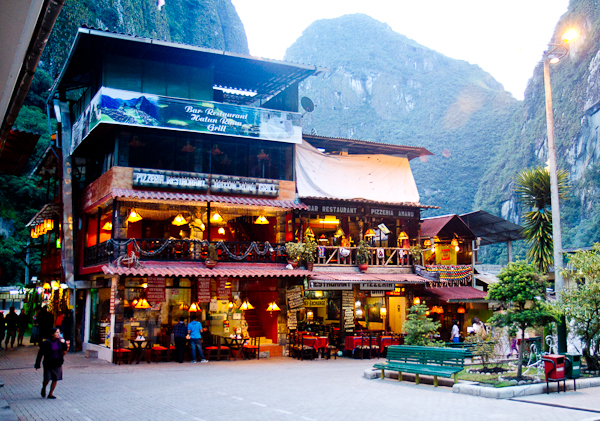
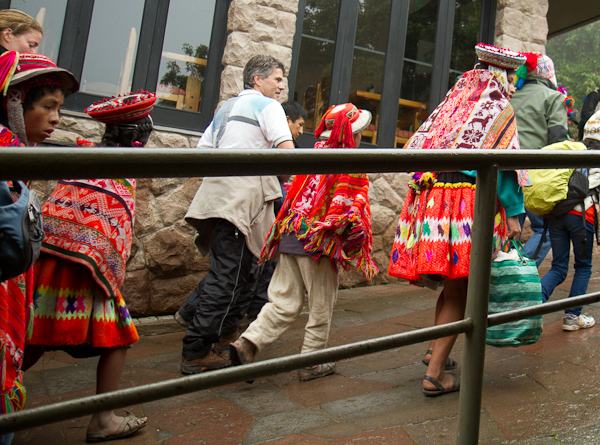
For dinner, we went to a local restaurant where Heiko ordered Guinea Pig which tasted a bit like rabbit.

